
From Normandy to Bavaria: Exploring the Heritage of France and Germany
 14 Day Tour of Bayeux, Rennes, Paris, Heidelberg and Munich
14 Day Tour of Bayeux, Rennes, Paris, Heidelberg and Munich
Overview
Trip Map
Itinerary
Inclusions
Reviews







14 Days 13 Nights
Best Time: Jan-Dec
Castle & Palace Tours
WWII History & Communist Era
Take a captivating journey to France and Germany, unveiling a tapestry of diverse histories, cultures, and breathtaking landscapes. Begin in the charming towns of Bayeux and Rennes, exploring the famed D-Day beaches and the medieval marvel of Mont Saint Michel. Then travel to Paris, Heidelberg, and Munich, where you'll enjoy private guided tours and visit architectural wonders like the Eiffel Tower, Neuschwanstein Castle, and Nymphenburg Palace. Delight in exploring picturesque medieval towns, experiencing vibrant city life, and discovering fascinating history, all with detailed travel guidance from Go Real Travel.
- Reflect on history at the American D-Day Beaches and enjoy the beauty of the Normandy coast.
- Visit the enchanting island abbey of Mont St. Michel, a marvel of medieval architecture.
- Wander through Heidelberg's Altstadt and visit its castle for stunning views of the Neckar River.
- Experience quintessential Parisian landmarks with visits to the Eiffel Tower, Louvre, & Versailles.
- Explore the fairy-tale castle of Neuschwanstein amidst the Bavarian Alps.
Take a captivating journey to France and Germany, unveiling a tapestry of diverse histories, cultures, and breathtaking landscapes. Begin in the charming towns of Bayeux and Rennes, exploring the famed D-Day beaches and the medieval marvel of Mont Saint Michel. Then travel to Paris, Heidelberg, and Munich, where you'll enjoy private guided tours and visit architectural wonders like the Eiffel Tower, Neuschwanstein Castle, and Nymphenburg Palace. Delight in exploring picturesque medieval towns, experiencing vibrant city life, and discovering fascinating history, all with detailed travel guidance from Go Real Travel.
- Reflect on history at the American D-Day Beaches and enjoy the beauty of the Normandy coast.
- Visit the enchanting island abbey of Mont St. Michel, a marvel of medieval architecture.
- Wander through Heidelberg's Altstadt and visit its castle for stunning views of the Neckar River.
- Experience quintessential Parisian landmarks with visits to the Eiffel Tower, Louvre, & Versailles.
- Explore the fairy-tale castle of Neuschwanstein amidst the Bavarian Alps.

D-Day Tour
The Great War & WWII

The Bayeux Tapestry
European History

Mont-Saint-Michel
Churches & Monasteries

Dinan
Small Towns

Eiffel Tower
Historic Landmarks

Louvre Museum
Museums & Galleries

Heidelberg Castle
Castles & Chateaux

Church of the Holy Spirit
Churches & Monasteries

Old Town
Architecture
Must see sights

D-Day Tour
The Great War & WWII

The Bayeux Tapestry
European History

Mont-Saint-Michel
Churches & Monasteries

Dinan
Small Towns

Eiffel Tower
Historic Landmarks

Louvre Museum
Museums & Galleries

Heidelberg Castle
Castles & Chateaux

Church of the Holy Spirit
Churches & Monasteries

Old Town
Architecture
Starting from
$4050
per person
 Not included
Not included Secure Your Customizable Trip
Enter your details to embark on a journey that can be tailored just for you.
Start
Travelers
0 travelers
Add Room
Remove Room
Preferred Hotel Stars
Select Hotel Stars
Craft Your Own Itinerary
Select your interests and destinations for a trip plan inspired by you.
France & Germany Adventure Trip - Map & Itinerary
Enable/Disable Map Scrolling
Click To Make Map Interactive

France & Germany Adventure Trip Timeline
 Edit Details
Edit DetailsArrival
2 nights
Bayeux
France
Shuttle: 5h30m
2 nights
Rennes
France
Train: 2h
3 nights
Paris
France
Train: 3.5h
Train: 0.5h
2 nights
Heidelberg
Germany
Train: 3h
4 nights
Munich
Germany
Departure
Day-By-Day Itinerary of France & Germany Adventure Trip

Day 1
Arrive Bayeux
Day 1
Arrive Bayeux



11:30 AM
Private Transfer from Paris to Bayeux
A private transfer service will pick you up directly from the airport in Paris and take you to your hotel in Bayeux, N/A. The drive time is approximately 3 hours. This transfer is pre-paid and is private for your travel party only.

Day 1
Arrive Bayeux


Day 1
Arrive Bayeux




11:30 AM:
Private Transfer from Paris to Bayeux
Mid-Day:
Bayeux Tapestry Museum and Museum of Art and History
Late Afternoon/Early Evening:
Old Town Bayeux


Day 2
Bayeux
Day 2
Bayeux


8:30 AM - 4:30 PM
American D-Day Beaches Guided
Discover the somber and honorable history of the Normandy Invasion on this full-day, private, guided tour, exploring the D-Day landing beaches while learning about America's involvement in World War II. The tour takes 9 hours. Your private guide will pick you up and drop you off in your hotel, and includes visits to key places like Omaha Beach, Pointe du Hoc, Sainte-Mère-Église as well as Utah Beach. Your professional and educated private guide will tell you more about the battles fought and sacrifices made at each site. You will also visit the American Cemetery where you'll read the names of soldiers missing in action after the Normandy landing.

Day 2
Bayeux


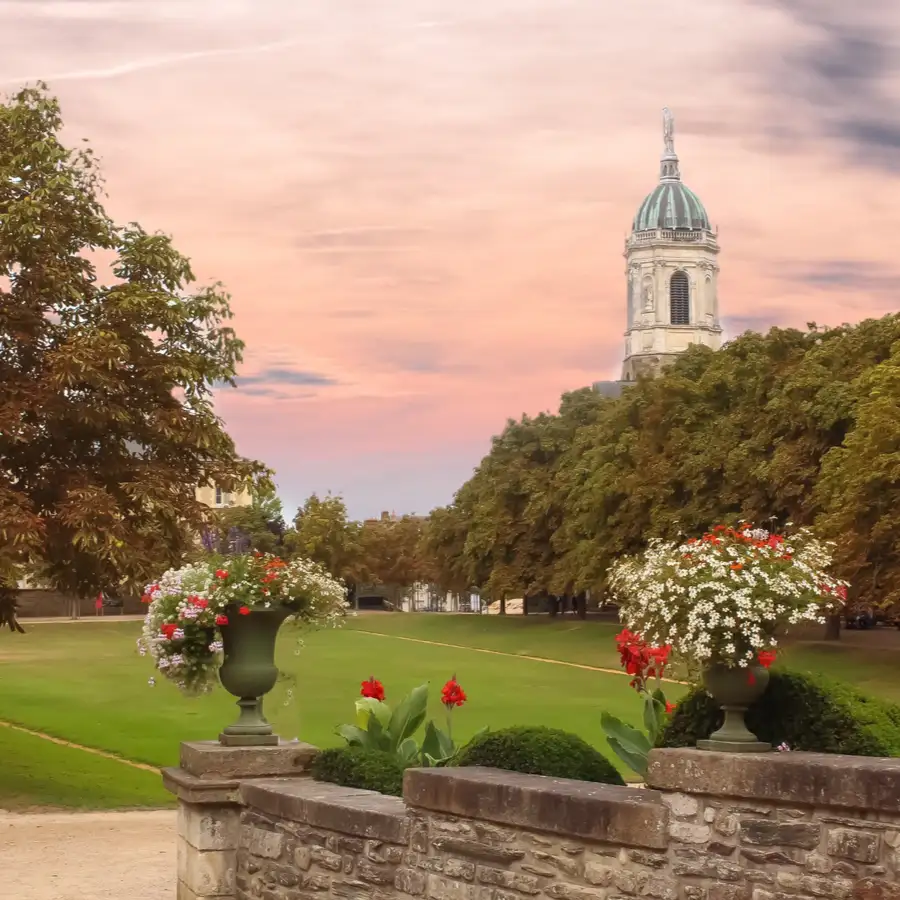
Day 3
Bayeux to Rennes
Day 3
Bayeux to Rennes


8:00 AM - 1:30 PM
Shuttle to Rennes via Mt.-St.-Michele
Your own, personal, English-speaking driver will pick you up promptly at the designated time from your hotel. This is a pre-paid transfer, so you only need to sit back and enjoy the ride while your driver answers any questions you may have. While the drive takes about two hours, you have the opportunity for a three-hour self-guided stop at the breathtaking Mont-St.-Michel. One of the most evocative towns in France, this island / abbey / fortress repelled medieval England but has has captured thousands of hearts with its ambiance and views towards the sea. Should you prefer a different stop, we can also suggest other options, Fougères and its castle, or Granville.

Mont-St.-Michel
Step foot upon Mont-Saint-Michel, a stunning village and UNESCO World Heritage Site that attracts visitors the world over for its dramatic setting on a rocky islet surrounded by powerful tides. The highlight, the Abbey of Mont-Saint-Michel, stands as a testament to medieval architecture, and withstood both seiges of the Hundred Years' War. Adored by the French for centuries,Mont-St. Micheletrances visitors with its natural beauty, historical richesse , and architecture, its winding streets and panoramic views transporting you to another era.
Show More

Mont-St.-Michel
Step foot upon Mont-Saint-Michel, a stunning village and UNESCO World Heritage Site that attracts visitors the world over for its dramatic setting on a rocky islet surrounded by powerful tides. The highlight, the Abbey of Mont-Saint-Michel, stands as a testament to medieval architecture, and withstood both seiges of the Hundred Years' War. Adored by the French for centuries,Mont-St. Micheletrances visitors with its natural beauty, historical richesse , and architecture, its winding streets and panoramic views transporting you to another era.
Show More

Mont-St.-Michel
Step foot upon Mont-Saint-Michel, a stunning village and UNESCO World Heritage Site that attracts visitors the world over for its dramatic setting on a rocky islet surrounded by powerful tides. The highlight, the Abbey of Mont-Saint-Michel, stands as a testament to medieval architecture, and withstood both seiges of the Hundred Years' War. Adored by the French for centuries,Mont-St. Micheletrances visitors with its natural beauty, historical richesse , and architecture, its winding streets and panoramic views transporting you to another era.
Show More

Mont-St.-Michel
Step foot upon Mont-Saint-Michel, a stunning village and UNESCO World Heritage Site that attracts visitors the world over for its dramatic setting on a rocky islet surrounded by powerful tides. The highlight, the Abbey of Mont-Saint-Michel, stands as a testament to medieval architecture, and withstood both seiges of the Hundred Years' War. Adored by the French for centuries,Mont-St. Micheletrances visitors with its natural beauty, historical richesse , and architecture, its winding streets and panoramic views transporting you to another era.
Show More

Mont-St.-Michel
Step foot upon Mont-Saint-Michel, a stunning village and UNESCO World Heritage Site that attracts visitors the world over for its dramatic setting on a rocky islet surrounded by powerful tides. The highlight, the Abbey of Mont-Saint-Michel, stands as a testament to medieval architecture, and withstood both seiges of the Hundred Years' War. Adored by the French for centuries,Mont-St. Micheletrances visitors with its natural beauty, historical richesse , and architecture, its winding streets and panoramic views transporting you to another era.
Show More
prev
next

Day 3
Bayeux to Rennes

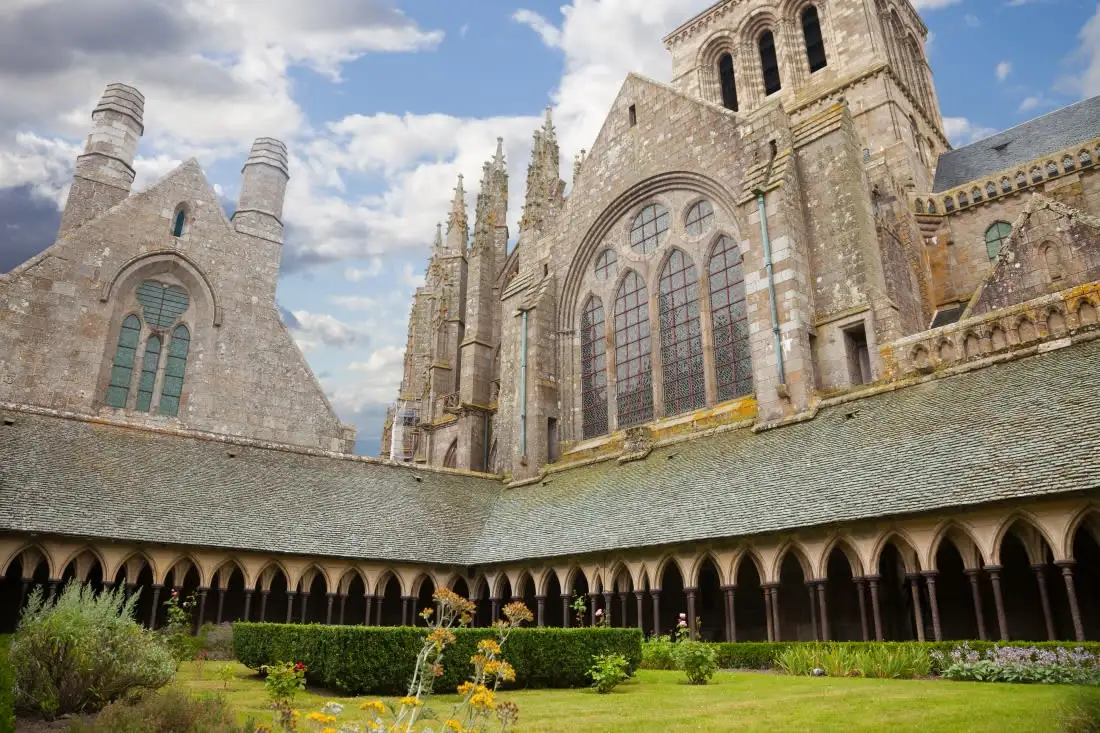
Mont-St.-Michel
 Highlight of Shuttle to Rennes via Mt.-St.-Michele
Highlight of Shuttle to Rennes via Mt.-St.-MicheleStep foot upon Mont-Saint-Michel, a stunning village and UNESCO World Heritage Site that attracts visitors the world over for its dramatic setting on a rocky islet surrounded by powerful tides. The highlight, the Abbey of Mont-Saint-Michel, stands as a testament to medieval architecture, and withstood both seiges of the Hundred Years' War. Adored by the French for centuries,Mont-St. Micheletrances visitors with its natural beauty, historical richesse , and architecture, its winding streets and panoramic views transporting you to another era.

Mont-St.-Michel
 Highlight of Shuttle to Rennes via Mt.-St.-Michele
Highlight of Shuttle to Rennes via Mt.-St.-MicheleStep foot upon Mont-Saint-Michel, a stunning village and UNESCO World Heritage Site that attracts visitors the world over for its dramatic setting on a rocky islet surrounded by powerful tides. The highlight, the Abbey of Mont-Saint-Michel, stands as a testament to medieval architecture, and withstood both seiges of the Hundred Years' War. Adored by the French for centuries,Mont-St. Micheletrances visitors with its natural beauty, historical richesse , and architecture, its winding streets and panoramic views transporting you to another era.

Mont-St.-Michel
 Highlight of Shuttle to Rennes via Mt.-St.-Michele
Highlight of Shuttle to Rennes via Mt.-St.-MicheleStep foot upon Mont-Saint-Michel, a stunning village and UNESCO World Heritage Site that attracts visitors the world over for its dramatic setting on a rocky islet surrounded by powerful tides. The highlight, the Abbey of Mont-Saint-Michel, stands as a testament to medieval architecture, and withstood both seiges of the Hundred Years' War. Adored by the French for centuries,Mont-St. Micheletrances visitors with its natural beauty, historical richesse , and architecture, its winding streets and panoramic views transporting you to another era.

Mont-St.-Michel
 Highlight of Shuttle to Rennes via Mt.-St.-Michele
Highlight of Shuttle to Rennes via Mt.-St.-MicheleStep foot upon Mont-Saint-Michel, a stunning village and UNESCO World Heritage Site that attracts visitors the world over for its dramatic setting on a rocky islet surrounded by powerful tides. The highlight, the Abbey of Mont-Saint-Michel, stands as a testament to medieval architecture, and withstood both seiges of the Hundred Years' War. Adored by the French for centuries,Mont-St. Micheletrances visitors with its natural beauty, historical richesse , and architecture, its winding streets and panoramic views transporting you to another era.

Mont-St.-Michel
 Highlight of Shuttle to Rennes via Mt.-St.-Michele
Highlight of Shuttle to Rennes via Mt.-St.-MicheleStep foot upon Mont-Saint-Michel, a stunning village and UNESCO World Heritage Site that attracts visitors the world over for its dramatic setting on a rocky islet surrounded by powerful tides. The highlight, the Abbey of Mont-Saint-Michel, stands as a testament to medieval architecture, and withstood both seiges of the Hundred Years' War. Adored by the French for centuries,Mont-St. Micheletrances visitors with its natural beauty, historical richesse , and architecture, its winding streets and panoramic views transporting you to another era.
prev
next


Day 4
Rennes
Day 4
Rennes

Morning to Late Afternoon
Dinan Excursion
Dinan guards its medieval heart of half-timbered homes and winding streets. An important crossing over the Rance River since time immemorial, written documents first mention the city in the 11th century, and its warriors even appear in the Bayeux Tapestry. Noteworthy sites include the Basilique St-Sauveur, the 14th-century Château de Dinan, and the artisan-lined Rue du Jerzual. The town's panoramic views and market in Place du Guesclin offer a taste of local life amid the well-preserved homes of a bygone era.

Day 4
Rennes



Day 5
Rennes to Paris
Day 5
Rennes to Paris





8:35 AM
Gare de Rennes Rail Dropoff by Taxi
Rennes taxis are generally reliable and honest, so this is cheaper than a pre-arranged transfer. If you are picked up one hour prior to departure, you should have plenty of time to catch your train. Detailed instructions are contained in the Full Itinerary.

Day 5
Rennes to Paris



Day 6
Paris
Day 6
Paris




Early Morning/Morning
Louvre Museum
It might be the greatest art museum in the world; it certainly is the largest with over 380,000 objects; to view every single one for even a minute apiece would take 75 days. And those descriptions still don't do the building and its collection justice. Marvel at treasures inside, including Leonardo Da Vinci's mysterious woman, the Mona Lisa, and everything from an Egyptian masterpiece of mummification to the famed Hellenistic sculpture, Venus de Milo, to patriotic French masterpieces like Delacroix’s Liberty Leading the People. Although the Louvre is vast and ever-crowded, with some strategy and a few helpful tips your visit will take in maximum artworks with minimal hassle.

Day 6
Paris


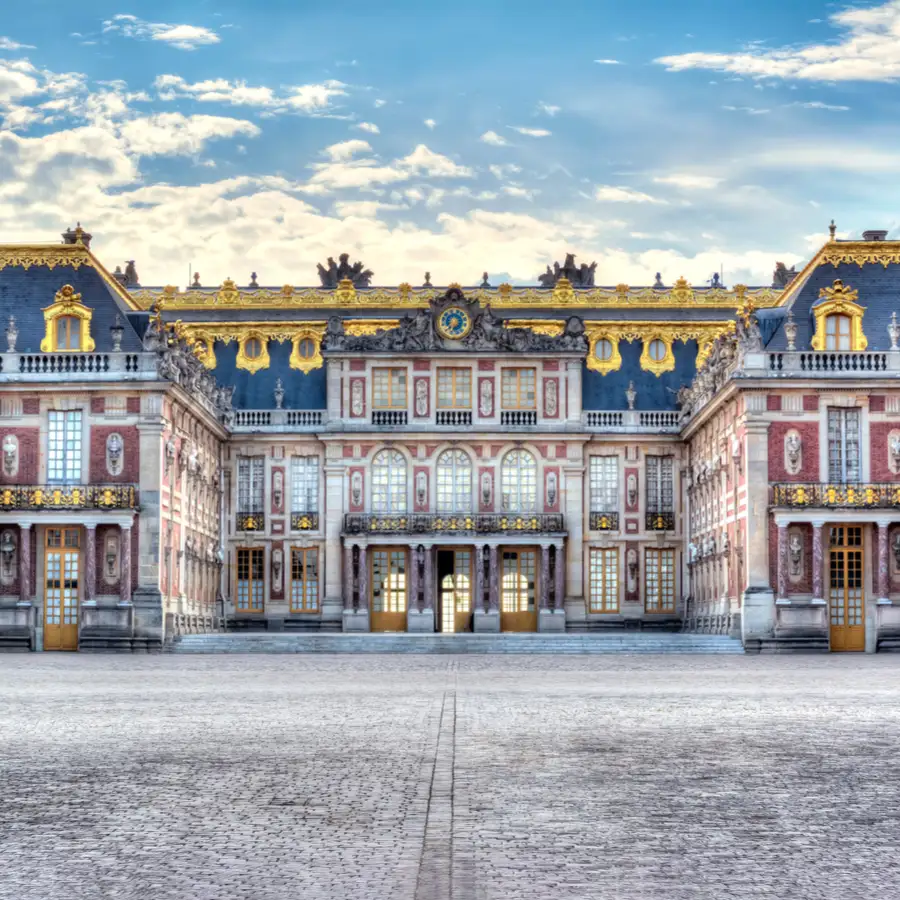
Day 7
Paris
Day 7
Paris



Early Morning to Mid-Day
Palace of Versailles
The Château of Versailles, a symbol of the grandeur of French monarchy, invites visitors to explore its lavish history and architectural majesty. From the spellbinding elegance of the Hall of Mirrors, where the Treaty of Versailles was signed, to the vast, meticulously manicured Gardens the pinnacle of French garden design, every corner tells a story of opulence and power. Discover the intimate escapes of royalty at the Grand and Petit Trianon, and marvel at the divine beauty of the Royal Chapel, a masterpiece of Baroque architecture.

The Queen's Hamlet
Imagine living like the "peasants" here?
Show More

Parc de Versailles
Feel like a king, feel like a queen, hopefully you'll feel good looking out across the park
Show More

Main Palace of Versailles
There are palaces, and then there is Versailles...
Show More

The Queen's Hamlet
Imagine living like the "peasants" here?
Show More

Parc de Versailles
Feel like a king, feel like a queen, hopefully you'll feel good looking out across the park
Show More

Main Palace of Versailles
There are palaces, and then there is Versailles...
Show More

The Queen's Hamlet
Imagine living like the "peasants" here?
Show More
prev
next

Day 7
Paris

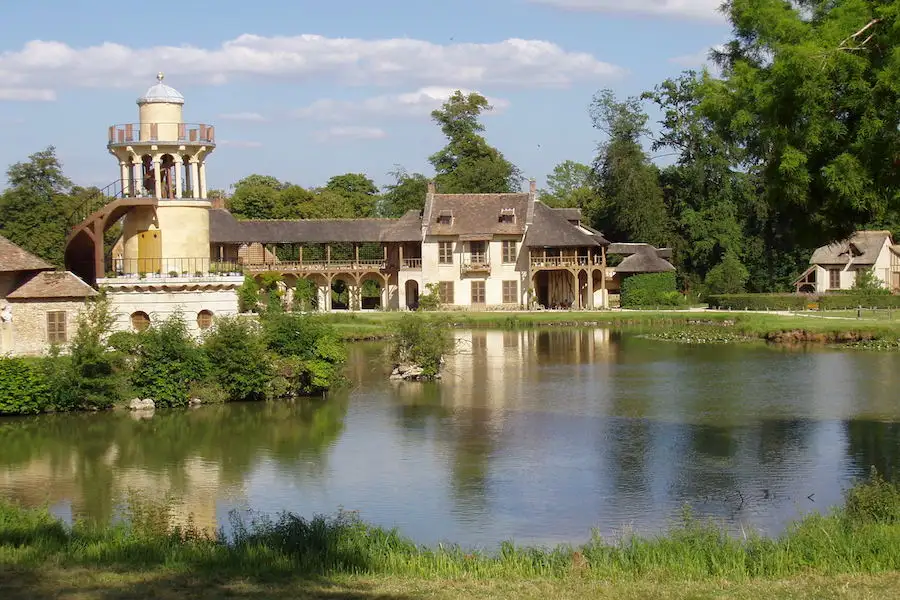
The Queen's Hamlet
 Highlight of Palace of Versailles
Highlight of Palace of VersaillesImagine living like the "peasants" here?
Desiring something different, Queen Marie Antoinette had a hamlet erected where she could supervise servants milking cows, tending pigs, collecting eggs from chickens. She dressed down to play her part, but apparently never got her hands dirty, as far as we know. Her peasant cottage only had two living rooms, a billiard room, a dining hall, and a library. If you are accustomed to palaces, only two living rooms is roughing it. Lest the queen got tired of it all, she could return to the Petit Trianon, a beautiful chateau built on the grounds of the Grand Trianon, which was the retreat chateau built on the grounds of the Palace of Versailles, which was a retreat from the Louvre Palace in Paris.
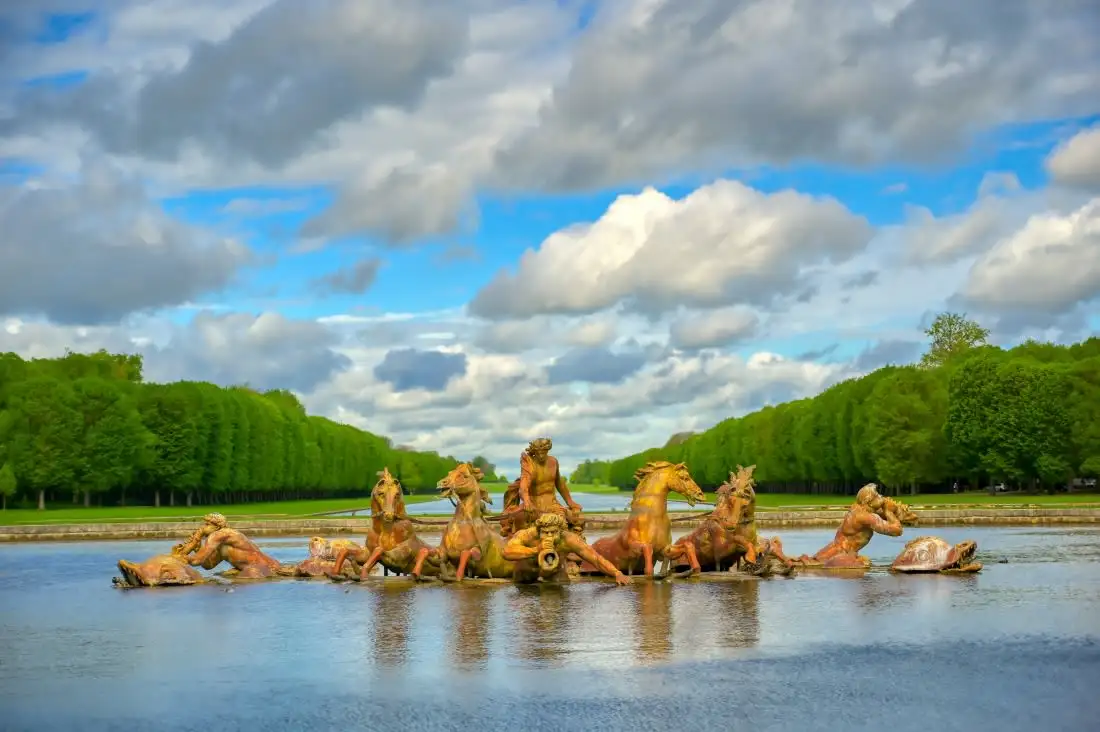
Parc de Versailles
 Highlight of Palace of Versailles
Highlight of Palace of VersaillesFeel like a king, feel like a queen, hopefully you'll feel good looking out across the park
The Parc de Versailles, features some 800 hectares of manicured lawns, stunning fountains, and the Grand Canal, all masterminded by André Le Nôtre. Highlights include the Neptune and Apollo Fountains, the Trianon Palaces, and the Queen's Hamlet. This vast garden symbolizes royal power, but you are welcomed to enjoy yourself on these pleasure grounds.
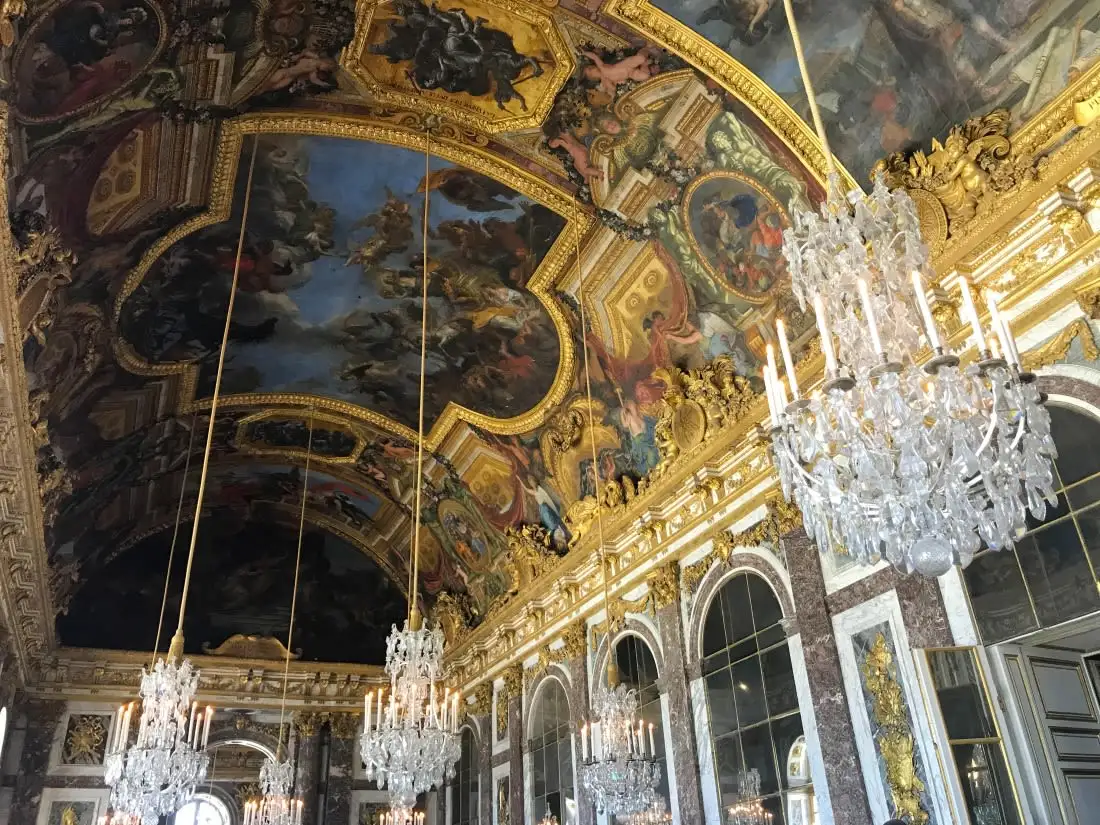
Main Palace of Versailles
 Highlight of Palace of Versailles
Highlight of Palace of VersaillesThere are palaces, and then there is Versailles...
Enlarged by for Emperor Louis XIV as an escape from the dreary political tension of Paris, Versailles might have been the most luxurious palace in the world. Even now, the building stuptifies with its grandeur and elegance, a stunning representation of the French monarchy's opulence. The famous Hall of Mirrors is just one of many, many (2300!) stunning rooms, only a small percentage of which are open for display. It might be too much, or one visit might never be enough.

The Queen's Hamlet
 Highlight of Palace of Versailles
Highlight of Palace of VersaillesImagine living like the "peasants" here?
Desiring something different, Queen Marie Antoinette had a hamlet erected where she could supervise servants milking cows, tending pigs, collecting eggs from chickens. She dressed down to play her part, but apparently never got her hands dirty, as far as we know. Her peasant cottage only had two living rooms, a billiard room, a dining hall, and a library. If you are accustomed to palaces, only two living rooms is roughing it. Lest the queen got tired of it all, she could return to the Petit Trianon, a beautiful chateau built on the grounds of the Grand Trianon, which was the retreat chateau built on the grounds of the Palace of Versailles, which was a retreat from the Louvre Palace in Paris.

Parc de Versailles
 Highlight of Palace of Versailles
Highlight of Palace of VersaillesFeel like a king, feel like a queen, hopefully you'll feel good looking out across the park
The Parc de Versailles, features some 800 hectares of manicured lawns, stunning fountains, and the Grand Canal, all masterminded by André Le Nôtre. Highlights include the Neptune and Apollo Fountains, the Trianon Palaces, and the Queen's Hamlet. This vast garden symbolizes royal power, but you are welcomed to enjoy yourself on these pleasure grounds.

Main Palace of Versailles
 Highlight of Palace of Versailles
Highlight of Palace of VersaillesThere are palaces, and then there is Versailles...
Enlarged by for Emperor Louis XIV as an escape from the dreary political tension of Paris, Versailles might have been the most luxurious palace in the world. Even now, the building stuptifies with its grandeur and elegance, a stunning representation of the French monarchy's opulence. The famous Hall of Mirrors is just one of many, many (2300!) stunning rooms, only a small percentage of which are open for display. It might be too much, or one visit might never be enough.

The Queen's Hamlet
 Highlight of Palace of Versailles
Highlight of Palace of VersaillesImagine living like the "peasants" here?
Desiring something different, Queen Marie Antoinette had a hamlet erected where she could supervise servants milking cows, tending pigs, collecting eggs from chickens. She dressed down to play her part, but apparently never got her hands dirty, as far as we know. Her peasant cottage only had two living rooms, a billiard room, a dining hall, and a library. If you are accustomed to palaces, only two living rooms is roughing it. Lest the queen got tired of it all, she could return to the Petit Trianon, a beautiful chateau built on the grounds of the Grand Trianon, which was the retreat chateau built on the grounds of the Palace of Versailles, which was a retreat from the Louvre Palace in Paris.
prev
next


Day 8
Paris to Heidelberg
Day 8
Paris to Heidelberg





Morning
Tuileries Gardens & Nearby Museums
Stroll in the Tuileries and attend one of the nearby museums, a classic way to spend your free hours in Paris. Originally cultivated in 1564 as the grounds for the Tuileries Palace, the gardens are the oldest in Paris. Its succession of royal owners ended and the garden became a public park in the 19th century; Parisians congregated to relax and socialize beside the fountains and leafy horse chestnut trees - they still do today. The Musée de l'Orangerie, in the Western corner of the gardens, exhibits many Impressionist and 20th-century artworks, including Claude Monet’s famous water lilies.

Museum d'Orsay
Soak it all in at the Musée d'Orsay, a former Beaux-Arts railway station transformed into a stunning showcase of Impressionist and Post-Impressionist masterpieces.
Show More

Orangerie
Let your vision swim with Monet's Water Lilies and other Impressionist artwork at the Musée de l'Orangerie
Show More

Tuileries Garden
Relax in the beautiful Tuileries Gardens, an oasis of manicured landscapes and historic statues in the heart of Paris.
Show More

Museum d'Orsay
Soak it all in at the Musée d'Orsay, a former Beaux-Arts railway station transformed into a stunning showcase of Impressionist and Post-Impressionist masterpieces.
Show More

Orangerie
Let your vision swim with Monet's Water Lilies and other Impressionist artwork at the Musée de l'Orangerie
Show More

Tuileries Garden
Relax in the beautiful Tuileries Gardens, an oasis of manicured landscapes and historic statues in the heart of Paris.
Show More

Museum d'Orsay
Soak it all in at the Musée d'Orsay, a former Beaux-Arts railway station transformed into a stunning showcase of Impressionist and Post-Impressionist masterpieces.
Show More
prev
next

Day 8
Paris to Heidelberg


Museum d'Orsay
 Highlight of Tuileries Gardens & Nearby Museums
Highlight of Tuileries Gardens & Nearby MuseumsSoak it all in at the Musée d'Orsay, a former Beaux-Arts railway station transformed into a stunning showcase of Impressionist and Post-Impressionist masterpieces.
The Musée d'Orsay, housed in an elegantly converted railway station, offers a world-renowned collection of Impressionist and Post-Impressionist art, featuring works by masters like Monet, Van Gogh, and Renoir. Its unique architecture, with grand clocks and sweeping galleries, complements the diverse array of sculptures, paintings, and decorative arts on display. A visit to the Musée d'Orsay is not just a tour of art history, but an immersive experience in a space where the past and present merge beautifully.

Orangerie
 Highlight of Tuileries Gardens & Nearby Museums
Highlight of Tuileries Gardens & Nearby MuseumsLet your vision swim with Monet's Water Lilies and other Impressionist artwork at the Musée de l'Orangerie
The Musée de l'Orangerie, nestled in a corner of the Tuileries Gardens, exhibits the stunning "Water Lilies" series by Claude Monet. This series of large-scale paintings, designed specifically for the two oval rooms they inhabit, offers an immersive experience into Monet's impressionist vision of his garden at Giverny. Beyond Monet, the museum boasts the Jean Walter and Paul Guillaume collection, featuring masterpieces by renowned artists such as Renoir, Cézanne, Matisse, Picasso, and Modigliani.

Tuileries Garden
 Highlight of Tuileries Gardens & Nearby Museums
Highlight of Tuileries Gardens & Nearby MuseumsRelax in the beautiful Tuileries Gardens, an oasis of manicured landscapes and historic statues in the heart of Paris.
The Tuileries Gardens, located next to the Louvre Museum, offer a peaceful retreat amidst the bustling city. Originally created as the royal gardens for the Tuileries Palace in the 16th century, they represent a classic example of French garden design. Visitors can marvel at the array of statues, including works by Rodin and Maillol, stroll along its perfectly aligned trees and flowerbeds, and enjoy panoramic views of the Seine and the Eiffel Tower.

Museum d'Orsay
 Highlight of Tuileries Gardens & Nearby Museums
Highlight of Tuileries Gardens & Nearby MuseumsSoak it all in at the Musée d'Orsay, a former Beaux-Arts railway station transformed into a stunning showcase of Impressionist and Post-Impressionist masterpieces.
The Musée d'Orsay, housed in an elegantly converted railway station, offers a world-renowned collection of Impressionist and Post-Impressionist art, featuring works by masters like Monet, Van Gogh, and Renoir. Its unique architecture, with grand clocks and sweeping galleries, complements the diverse array of sculptures, paintings, and decorative arts on display. A visit to the Musée d'Orsay is not just a tour of art history, but an immersive experience in a space where the past and present merge beautifully.

Orangerie
 Highlight of Tuileries Gardens & Nearby Museums
Highlight of Tuileries Gardens & Nearby MuseumsLet your vision swim with Monet's Water Lilies and other Impressionist artwork at the Musée de l'Orangerie
The Musée de l'Orangerie, nestled in a corner of the Tuileries Gardens, exhibits the stunning "Water Lilies" series by Claude Monet. This series of large-scale paintings, designed specifically for the two oval rooms they inhabit, offers an immersive experience into Monet's impressionist vision of his garden at Giverny. Beyond Monet, the museum boasts the Jean Walter and Paul Guillaume collection, featuring masterpieces by renowned artists such as Renoir, Cézanne, Matisse, Picasso, and Modigliani.

Tuileries Garden
 Highlight of Tuileries Gardens & Nearby Museums
Highlight of Tuileries Gardens & Nearby MuseumsRelax in the beautiful Tuileries Gardens, an oasis of manicured landscapes and historic statues in the heart of Paris.
The Tuileries Gardens, located next to the Louvre Museum, offer a peaceful retreat amidst the bustling city. Originally created as the royal gardens for the Tuileries Palace in the 16th century, they represent a classic example of French garden design. Visitors can marvel at the array of statues, including works by Rodin and Maillol, stroll along its perfectly aligned trees and flowerbeds, and enjoy panoramic views of the Seine and the Eiffel Tower.

Museum d'Orsay
 Highlight of Tuileries Gardens & Nearby Museums
Highlight of Tuileries Gardens & Nearby MuseumsSoak it all in at the Musée d'Orsay, a former Beaux-Arts railway station transformed into a stunning showcase of Impressionist and Post-Impressionist masterpieces.
The Musée d'Orsay, housed in an elegantly converted railway station, offers a world-renowned collection of Impressionist and Post-Impressionist art, featuring works by masters like Monet, Van Gogh, and Renoir. Its unique architecture, with grand clocks and sweeping galleries, complements the diverse array of sculptures, paintings, and decorative arts on display. A visit to the Musée d'Orsay is not just a tour of art history, but an immersive experience in a space where the past and present merge beautifully.
prev
next

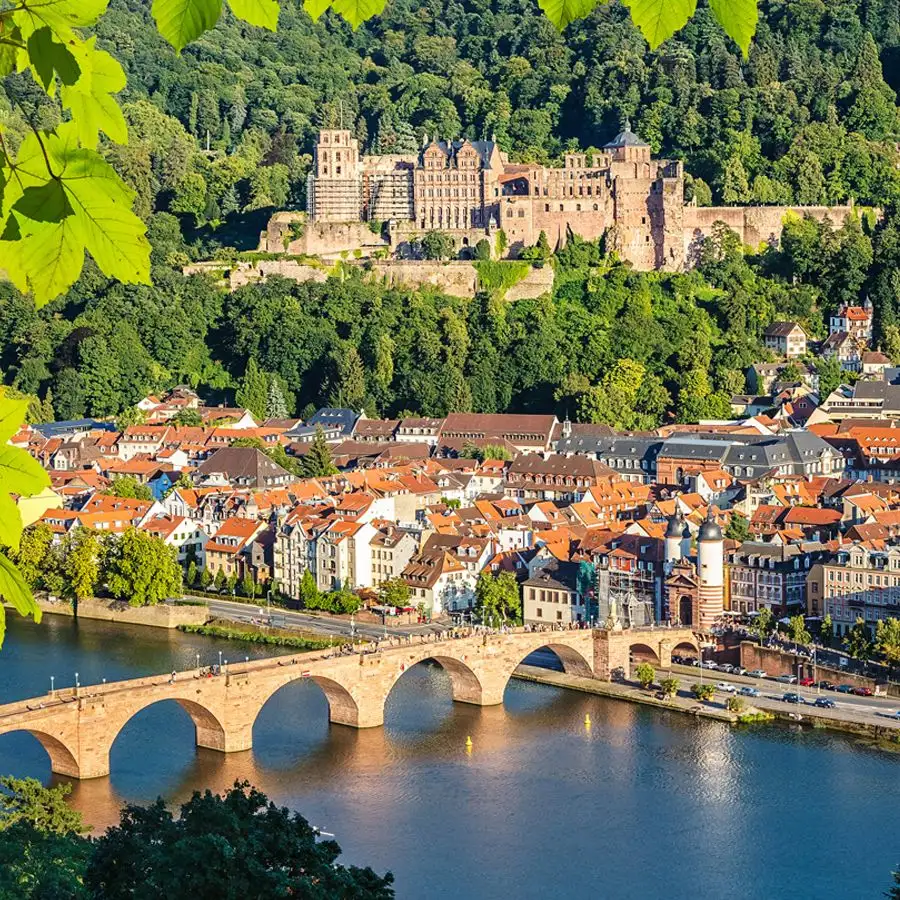
Day 9
Heidelberg
Day 9
Heidelberg




9:00 AM - 1:00 PM
Guided Walking Tour of Heidelberg
On this 4 hour tour, your guide will show you the highlights of Heidelberg and help you understand what makes this city so unique. Sites visited will include the Heidelberg University, the Old Bridge, Altstadt, Town Hall and Heidelberg Castle.

Altstadt
The light and colors of this historic city are a happy sight to behold.
Show More

Heidelberg University
Founded in 1386, this is Germany’s oldest and one of its most prestigious universities.
Show More

Altstadt
The light and colors of this historic city are a happy sight to behold.
Show More

Heidelberg University
Founded in 1386, this is Germany’s oldest and one of its most prestigious universities.
Show More

Altstadt
The light and colors of this historic city are a happy sight to behold.
Show More

Heidelberg University
Founded in 1386, this is Germany’s oldest and one of its most prestigious universities.
Show More
prev
next

Day 9
Heidelberg


Altstadt
 Highlight of Guided Walking Tour of Heidelberg
Highlight of Guided Walking Tour of HeidelbergThe light and colors of this historic city are a happy sight to behold.
The Old Town of Heidelberg, Germany, seduces with its views. Framed by the Neckar River and overlooked by the majestic Heidelberg Castle, its cobblestone streets, baroque architecture, and the oldest university in Germany beckon visitors. Highlights include the Hauptstrasse, a bustling pedestrian shopping street, and the historic Holy Spirit Church. Heidelberg's Old Town embodies the romantic spirit of Germany.

Heidelberg University
 Highlight of Guided Walking Tour of Heidelberg
Highlight of Guided Walking Tour of HeidelbergFounded in 1386, this is Germany’s oldest and one of its most prestigious universities.
The university is currently comprised of 12 faculties with over 30,000 German and international students enrolled. The college is known for its reputable science, art, law, and medical programs. The most historic facilities are located around the Universitätsplatz and dominated by the Alte Universität (Old University, 1712–28; on the south side) and the Neue Universität (New University, 1931; on the north side).

Altstadt
 Highlight of Guided Walking Tour of Heidelberg
Highlight of Guided Walking Tour of HeidelbergThe light and colors of this historic city are a happy sight to behold.
The Old Town of Heidelberg, Germany, seduces with its views. Framed by the Neckar River and overlooked by the majestic Heidelberg Castle, its cobblestone streets, baroque architecture, and the oldest university in Germany beckon visitors. Highlights include the Hauptstrasse, a bustling pedestrian shopping street, and the historic Holy Spirit Church. Heidelberg's Old Town embodies the romantic spirit of Germany.

Heidelberg University
 Highlight of Guided Walking Tour of Heidelberg
Highlight of Guided Walking Tour of HeidelbergFounded in 1386, this is Germany’s oldest and one of its most prestigious universities.
The university is currently comprised of 12 faculties with over 30,000 German and international students enrolled. The college is known for its reputable science, art, law, and medical programs. The most historic facilities are located around the Universitätsplatz and dominated by the Alte Universität (Old University, 1712–28; on the south side) and the Neue Universität (New University, 1931; on the north side).

Altstadt
 Highlight of Guided Walking Tour of Heidelberg
Highlight of Guided Walking Tour of HeidelbergThe light and colors of this historic city are a happy sight to behold.
The Old Town of Heidelberg, Germany, seduces with its views. Framed by the Neckar River and overlooked by the majestic Heidelberg Castle, its cobblestone streets, baroque architecture, and the oldest university in Germany beckon visitors. Highlights include the Hauptstrasse, a bustling pedestrian shopping street, and the historic Holy Spirit Church. Heidelberg's Old Town embodies the romantic spirit of Germany.

Heidelberg University
 Highlight of Guided Walking Tour of Heidelberg
Highlight of Guided Walking Tour of HeidelbergFounded in 1386, this is Germany’s oldest and one of its most prestigious universities.
The university is currently comprised of 12 faculties with over 30,000 German and international students enrolled. The college is known for its reputable science, art, law, and medical programs. The most historic facilities are located around the Universitätsplatz and dominated by the Alte Universität (Old University, 1712–28; on the south side) and the Neue Universität (New University, 1931; on the north side).
prev
next

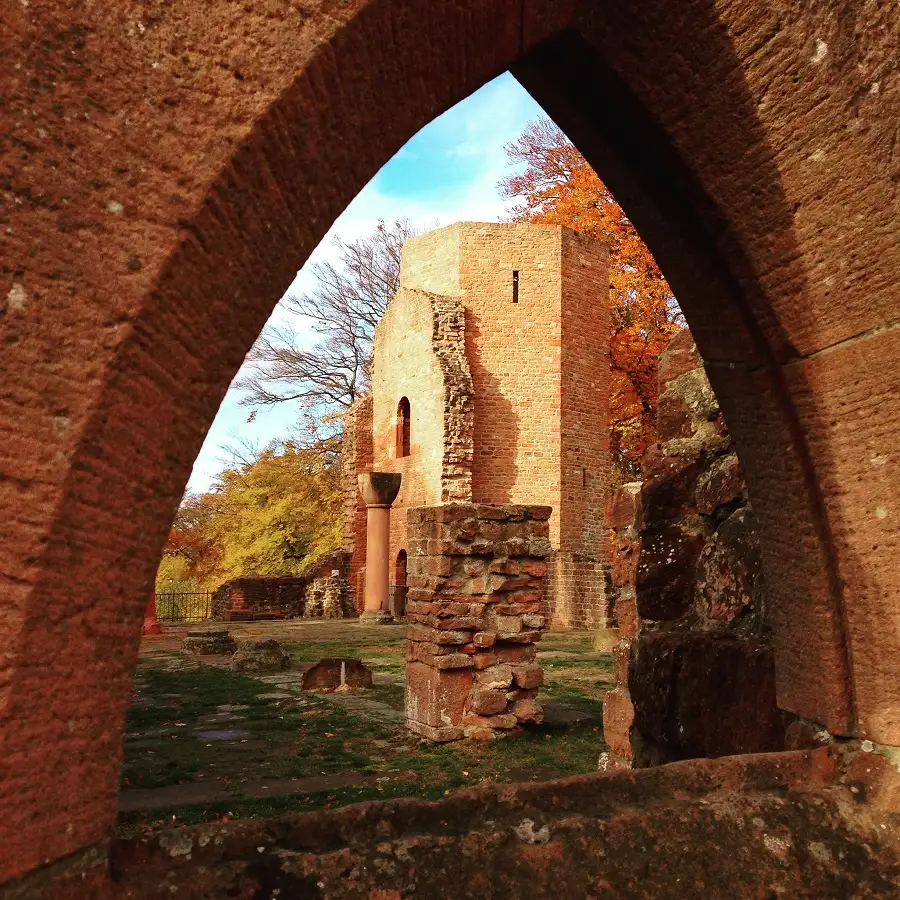
Day 10
Heidelberg to Munich
Day 10
Heidelberg to Munich





Morning
Philospher's Way Hike
Enjoy a gentle hike up into the hills above Heidelberg from the Old Bridge to get magnificent views of the castle on the other side, then trek up further to visit the wonderfully atmospheric ruins of St. Michael's ruins and Thingstätte, the pseudo-Grecian amphitheater built by the Nazis in the mid-1930s to stage opera and theater plays extolling the virtues of the Aryan race.

Thingstätte
Find the open-air amphiteater built by the Nazis as a site for their rallies.
Show More

Monastary Ruins
Discover the isolated ruins at the top of the hill overlooking Heidelberg.
Show More

Thingstätte
Find the open-air amphiteater built by the Nazis as a site for their rallies.
Show More

Monastary Ruins
Discover the isolated ruins at the top of the hill overlooking Heidelberg.
Show More

Thingstätte
Find the open-air amphiteater built by the Nazis as a site for their rallies.
Show More

Monastary Ruins
Discover the isolated ruins at the top of the hill overlooking Heidelberg.
Show More
prev
next

Day 10
Heidelberg to Munich

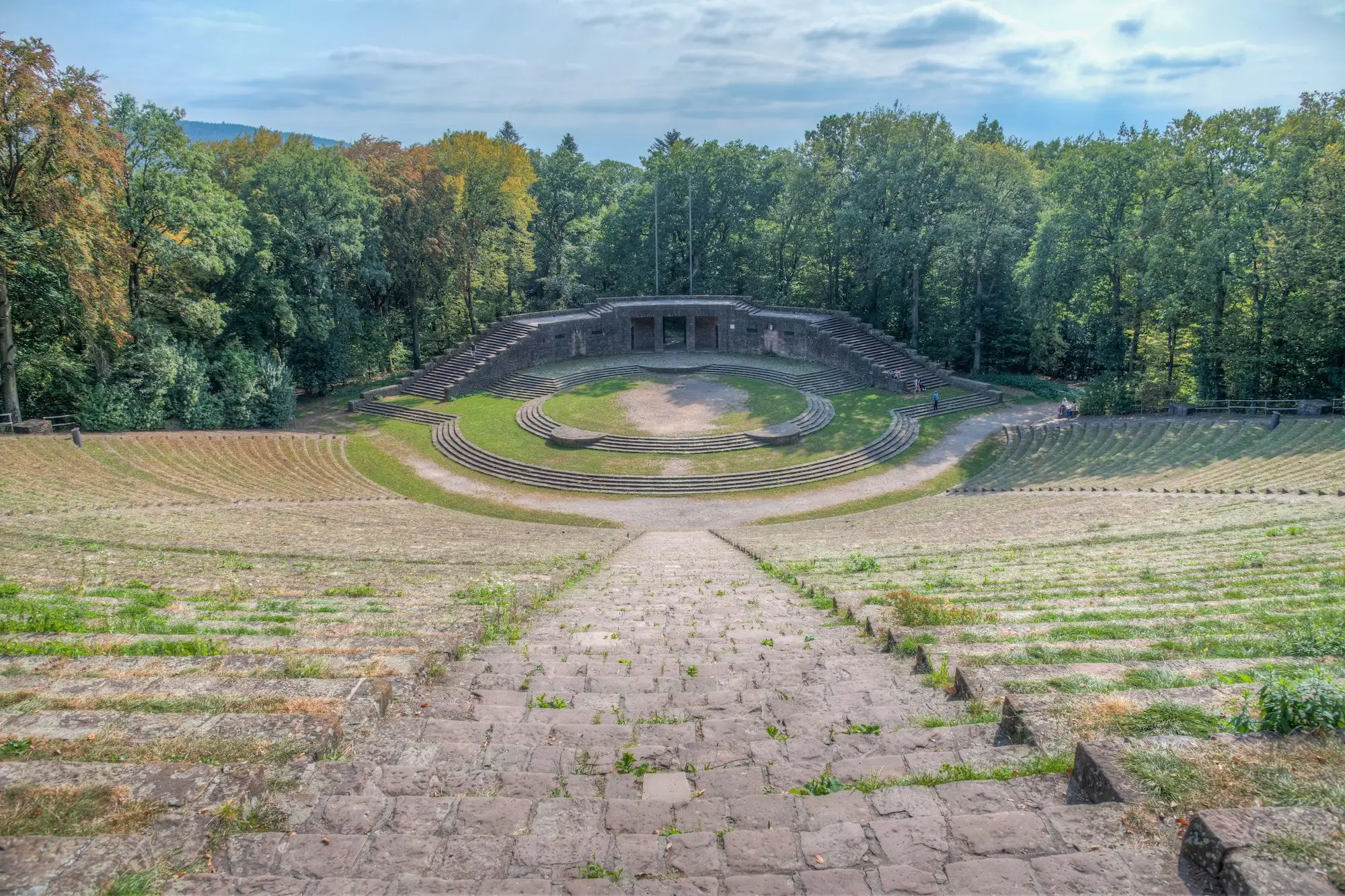
Thingstätte
 Highlight of Philospher's Way Hike
Highlight of Philospher's Way HikeFind the open-air amphiteater built by the Nazis as a site for their rallies.
This open-air amphitheater was built in 1935 by the Nazi party and was designed by Heidelberg native Albert Speer.It was used by the Nazi party during WWII for rallies and solstice festivals. It is now preserved as a monument, but it is still used for many festivals and cultural events throughout the year.
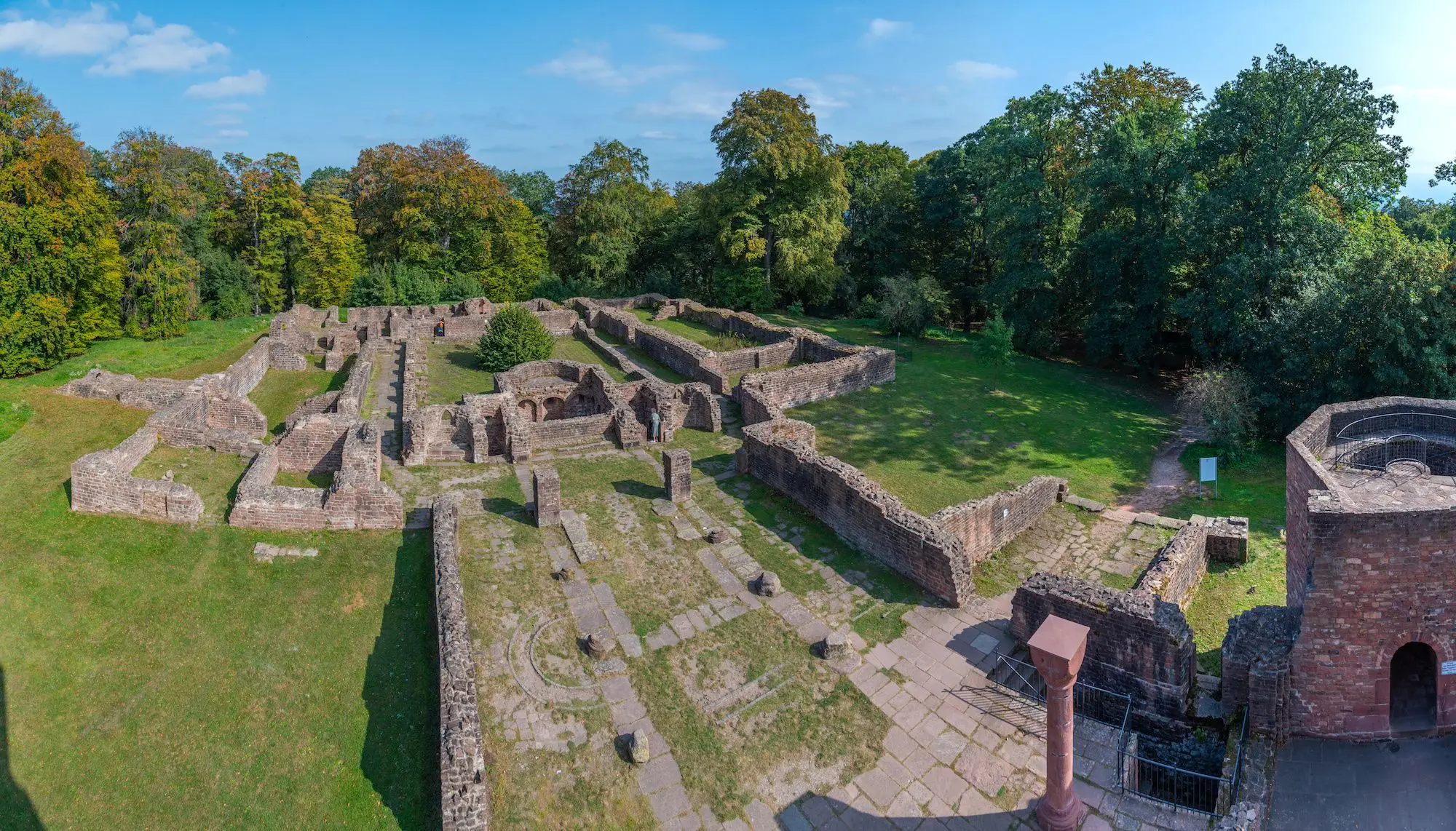
Monastary Ruins
 Highlight of Philospher's Way Hike
Highlight of Philospher's Way HikeDiscover the isolated ruins at the top of the hill overlooking Heidelberg.
In 1023, Abbot Reginbald, who later became Bishop of Speyer, built St. Michael’s Monastery, and it is these remains which are still visible today. After the death of Abbott Friedrich in 1070, the monastery became a place of pilgrimage. In 1503, the last three monks living in the monastery were killed in their beds when part of the steeple collapsed. After that, the monastery became abandoned and was forgotten.

Thingstätte
 Highlight of Philospher's Way Hike
Highlight of Philospher's Way HikeFind the open-air amphiteater built by the Nazis as a site for their rallies.
This open-air amphitheater was built in 1935 by the Nazi party and was designed by Heidelberg native Albert Speer.It was used by the Nazi party during WWII for rallies and solstice festivals. It is now preserved as a monument, but it is still used for many festivals and cultural events throughout the year.

Monastary Ruins
 Highlight of Philospher's Way Hike
Highlight of Philospher's Way HikeDiscover the isolated ruins at the top of the hill overlooking Heidelberg.
In 1023, Abbot Reginbald, who later became Bishop of Speyer, built St. Michael’s Monastery, and it is these remains which are still visible today. After the death of Abbott Friedrich in 1070, the monastery became a place of pilgrimage. In 1503, the last three monks living in the monastery were killed in their beds when part of the steeple collapsed. After that, the monastery became abandoned and was forgotten.

Thingstätte
 Highlight of Philospher's Way Hike
Highlight of Philospher's Way HikeFind the open-air amphiteater built by the Nazis as a site for their rallies.
This open-air amphitheater was built in 1935 by the Nazi party and was designed by Heidelberg native Albert Speer.It was used by the Nazi party during WWII for rallies and solstice festivals. It is now preserved as a monument, but it is still used for many festivals and cultural events throughout the year.

Monastary Ruins
 Highlight of Philospher's Way Hike
Highlight of Philospher's Way HikeDiscover the isolated ruins at the top of the hill overlooking Heidelberg.
In 1023, Abbot Reginbald, who later became Bishop of Speyer, built St. Michael’s Monastery, and it is these remains which are still visible today. After the death of Abbott Friedrich in 1070, the monastery became a place of pilgrimage. In 1503, the last three monks living in the monastery were killed in their beds when part of the steeple collapsed. After that, the monastery became abandoned and was forgotten.
prev
next


Day 11
Munich
Day 11
Munich




9:00 AM - 11:30 AM
Guided Walk Tour of Historic Munich
Munich contains many reminders of a long and varied history but also encompasses the modern features of a strong and vibrant city. The insights of a local help make sense of the traditions, trends, and promises of Bavaria's Capital - sometimes referred to as the city of laptops and lederhosen. On this tour, your guide will show you the highlights of Munich and point out the many hidden treasures.

Day 11
Munich


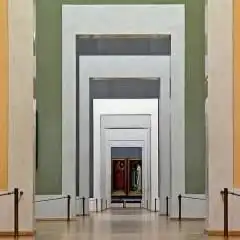
Day 12
Munich
Day 12
Munich



Morning/Mid-Day
Arts District
Munich's Museum Quarter (Kunstareal) has grown continuously over a period of 200 years offering an extraordinary variety of museums with works from Pharaonic Egypt right through to the present day. There are 18 museums and exhibition halls, more than 40 galleries, six internationally renowned universities and numerous cultural institutions all in close proximity and within walking distance of each other.

Pinakothek der Moderne
Peruse 19th and 20th century art in a stylishly modern setting.
Show More

Museum Brandhorst
Peruse modern art in this remarkably different building.
Show More

State Museum of Egyptian Art
History buffs will love this underappreciated museum dedicated to Egyptian archaeology.
Show More

Alte Pinakothek
Enjoy a tremendous collection of art in what was once the world's largest art gallery.
Show More

Neue Pinakothek
See some of the 19th and early 20th centuries' greatest artworks.
Show More

Pinakothek der Moderne
Peruse 19th and 20th century art in a stylishly modern setting.
Show More

Museum Brandhorst
Peruse modern art in this remarkably different building.
Show More

State Museum of Egyptian Art
History buffs will love this underappreciated museum dedicated to Egyptian archaeology.
Show More

Alte Pinakothek
Enjoy a tremendous collection of art in what was once the world's largest art gallery.
Show More

Neue Pinakothek
See some of the 19th and early 20th centuries' greatest artworks.
Show More

Pinakothek der Moderne
Peruse 19th and 20th century art in a stylishly modern setting.
Show More
prev
next

Day 12
Munich


Pinakothek der Moderne
 Highlight of Arts District
Highlight of Arts DistrictPeruse 19th and 20th century art in a stylishly modern setting.
The strikingly clean-lined Pinakothek der Moderne, gathers its eclectic collection of classic modern and contemporary art, design and architecture around a central rotunda. On the west side of the building are works representing last century's key artistic movements, from Cubism through to Surrealism and beyond. The east wing is devoted to contemporary art.

Museum Brandhorst
 Highlight of Arts District
Highlight of Arts DistrictPeruse modern art in this remarkably different building.
The Museum Brandhorst is an eye-catching structure covered with 36,000 polychromatic ceramic rods in 23 custom colors and a second layer consisting of a horizontally folded metal skin, coated in two colors. This layering and its polychromy lend the skin a varied appearance: What is vivid and three-dimensional from close up appears homogeneous and flat from afar. It was opened in 2009 to house a collection of German and modern art in a setting of restrained, spacious modernism. Its rotating exhibits include works by Andy Warhol, Jeff Koons, and Picasso, as well as major contemporary German artists.

State Museum of Egyptian Art
 Highlight of Arts District
Highlight of Arts DistrictHistory buffs will love this underappreciated museum dedicated to Egyptian archaeology.
The impressive entrance to the brand spanking new State Museum of Egyptian Art is reminiscent of a grand descent into a Pharoah's tomb. Opened in 2013 to house artifacts formerly contained in the Residenz, the museum has a collection which spans 5000 years of Egyptian history.

Alte Pinakothek
 Highlight of Arts District
Highlight of Arts DistrictEnjoy a tremendous collection of art in what was once the world's largest art gallery.
The largest art gallery in the world when it was first opened in 1836, the Alte Pinakothek can still be an overwhelming experience: the collections, which are based on the royal collection of the Wittelsbach dynasty over five hundred years, are arranged geographically and chronologically, encompassing German, Dutch, Flemish, Spanish, French and Italian art, with a timespan from the Middle Ages to the 18th century. It houses the largest collection of Rubens in the world, so be sure to stop by the Flemish paintings. Also worthy of particular attention if you're short on time are the richly comic works by Pieter Brueghel in the Netherlandish collection, and the German late Gothic and Renaissance art collection represented by the likes of Albrecht Dürer and Cranach the Elder.
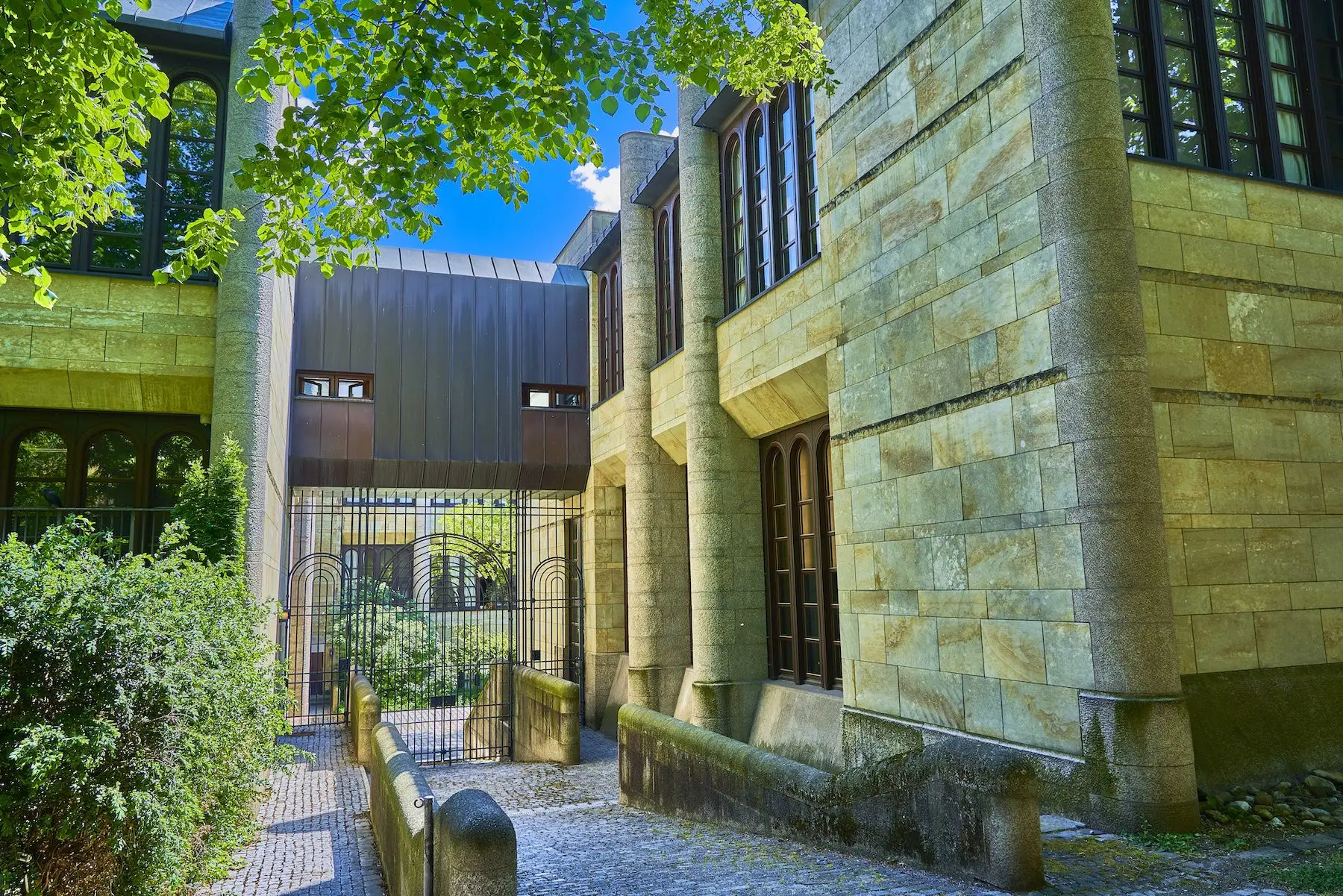
Neue Pinakothek
 Highlight of Arts District
Highlight of Arts DistrictSee some of the 19th and early 20th centuries' greatest artworks.
Directly across the road from Alte Pinakothek, the Neue Pinakothek picks up where the older museum leaves off, concentrating on art from the 19th century to Jugendstil. The audio-guide tour starts with art from around 1800, prominent among which are a number of canvases by Goya, before progressing to English painting from the likes of Gainsborough, Constable, and Turner. Much of the rest of the museum is given over to German Art, with an emphasis on artists active in the court of Ludwig I, such as work by the architect who designed the Alte Pinakothek, Leo von Klenze, and the Berlin architect Karl Friedrich Schinkel. There are also works by Caspar David Friedrich and Adolph von Menzel.

Pinakothek der Moderne
 Highlight of Arts District
Highlight of Arts DistrictPeruse 19th and 20th century art in a stylishly modern setting.
The strikingly clean-lined Pinakothek der Moderne, gathers its eclectic collection of classic modern and contemporary art, design and architecture around a central rotunda. On the west side of the building are works representing last century's key artistic movements, from Cubism through to Surrealism and beyond. The east wing is devoted to contemporary art.

Museum Brandhorst
 Highlight of Arts District
Highlight of Arts DistrictPeruse modern art in this remarkably different building.
The Museum Brandhorst is an eye-catching structure covered with 36,000 polychromatic ceramic rods in 23 custom colors and a second layer consisting of a horizontally folded metal skin, coated in two colors. This layering and its polychromy lend the skin a varied appearance: What is vivid and three-dimensional from close up appears homogeneous and flat from afar. It was opened in 2009 to house a collection of German and modern art in a setting of restrained, spacious modernism. Its rotating exhibits include works by Andy Warhol, Jeff Koons, and Picasso, as well as major contemporary German artists.

State Museum of Egyptian Art
 Highlight of Arts District
Highlight of Arts DistrictHistory buffs will love this underappreciated museum dedicated to Egyptian archaeology.
The impressive entrance to the brand spanking new State Museum of Egyptian Art is reminiscent of a grand descent into a Pharoah's tomb. Opened in 2013 to house artifacts formerly contained in the Residenz, the museum has a collection which spans 5000 years of Egyptian history.

Alte Pinakothek
 Highlight of Arts District
Highlight of Arts DistrictEnjoy a tremendous collection of art in what was once the world's largest art gallery.
The largest art gallery in the world when it was first opened in 1836, the Alte Pinakothek can still be an overwhelming experience: the collections, which are based on the royal collection of the Wittelsbach dynasty over five hundred years, are arranged geographically and chronologically, encompassing German, Dutch, Flemish, Spanish, French and Italian art, with a timespan from the Middle Ages to the 18th century. It houses the largest collection of Rubens in the world, so be sure to stop by the Flemish paintings. Also worthy of particular attention if you're short on time are the richly comic works by Pieter Brueghel in the Netherlandish collection, and the German late Gothic and Renaissance art collection represented by the likes of Albrecht Dürer and Cranach the Elder.

Neue Pinakothek
 Highlight of Arts District
Highlight of Arts DistrictSee some of the 19th and early 20th centuries' greatest artworks.
Directly across the road from Alte Pinakothek, the Neue Pinakothek picks up where the older museum leaves off, concentrating on art from the 19th century to Jugendstil. The audio-guide tour starts with art from around 1800, prominent among which are a number of canvases by Goya, before progressing to English painting from the likes of Gainsborough, Constable, and Turner. Much of the rest of the museum is given over to German Art, with an emphasis on artists active in the court of Ludwig I, such as work by the architect who designed the Alte Pinakothek, Leo von Klenze, and the Berlin architect Karl Friedrich Schinkel. There are also works by Caspar David Friedrich and Adolph von Menzel.

Pinakothek der Moderne
 Highlight of Arts District
Highlight of Arts DistrictPeruse 19th and 20th century art in a stylishly modern setting.
The strikingly clean-lined Pinakothek der Moderne, gathers its eclectic collection of classic modern and contemporary art, design and architecture around a central rotunda. On the west side of the building are works representing last century's key artistic movements, from Cubism through to Surrealism and beyond. The east wing is devoted to contemporary art.
prev
next


Day 13
Munich
Day 13
Munich

Early Morning to Late Afternoon
Excursion to Neuschwanstein Castle
An inspiration for the Disney Castles, numerous fairy tales, and countless dreamers, the Castle of Neuschwanstein is perhaps the most famous castle in the world. The eccentric Bavarian King Ludwig II created this amazing palace in the 19th century as an idyllic version of a medieval castle. You can visit by taking a guided tour from Munich or traveling independently by train and bus. In addition to enjoying spectacular views you can take a guided tour of the castle interior which is well worth the experience (but keep in mind that there a lots of steps to negotiate). If traveling independentally, be sure to book your interior tour reservations at least two days in advance.

Linderhof Palace
Stop by King Ludwig II's smallest palace on your way to Neuschwanstein and explore its delightful gardens.
Show More

Mary's Bridge
Enjoy a stunning view of the castle while suspended over a mountainous gorge.
Show More

Linderhof Palace
Stop by King Ludwig II's smallest palace on your way to Neuschwanstein and explore its delightful gardens.
Show More

Mary's Bridge
Enjoy a stunning view of the castle while suspended over a mountainous gorge.
Show More

Linderhof Palace
Stop by King Ludwig II's smallest palace on your way to Neuschwanstein and explore its delightful gardens.
Show More

Mary's Bridge
Enjoy a stunning view of the castle while suspended over a mountainous gorge.
Show More
prev
next

Day 13
Munich


Linderhof Palace
 Highlight of Excursion to Neuschwanstein Castle
Highlight of Excursion to Neuschwanstein CastleStop by King Ludwig II's smallest palace on your way to Neuschwanstein and explore its delightful gardens.
Another of the eccentric (some say mad) King Ludwig II's creations is Linderhof Palace, which with its fantastic grotto and Moorish pavilion testifies to the king's vision. The smallest of his three palaces that he built, it is the only one that he lived to see completed. The palace is in between Munich and Neuschwanstein, meaning many tours stop there along the way.
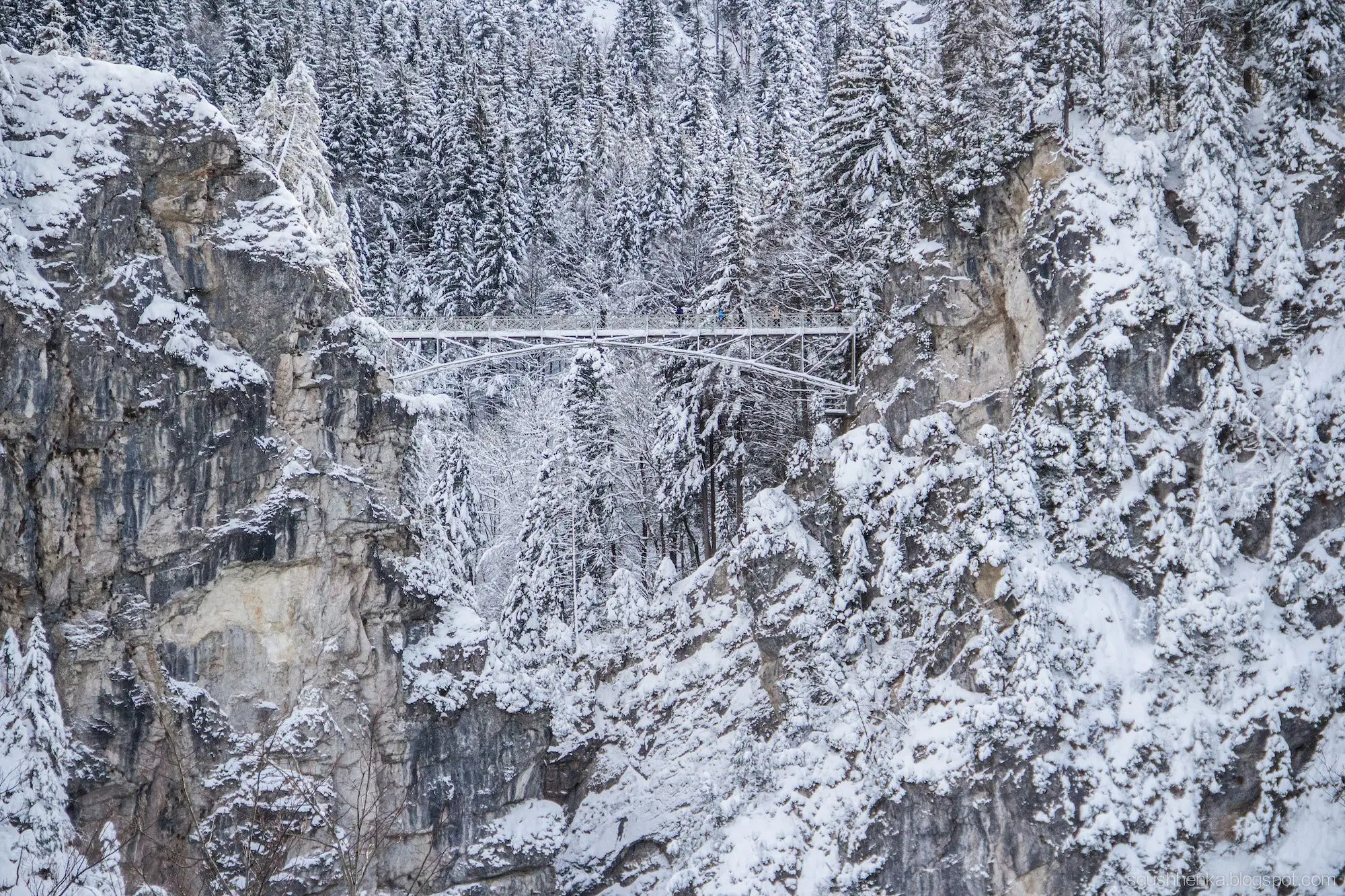
Mary's Bridge
 Highlight of Excursion to Neuschwanstein Castle
Highlight of Excursion to Neuschwanstein CastleEnjoy a stunning view of the castle while suspended over a mountainous gorge.
You definitely won't want to miss taking in the best views and photographs of Neuschwanstein from Marienbrücke (Mary's Bridge) over the dramatic Pöllat Gorge. The minibus terminal is very close at just 5 min walk away, while it's a steepish 10-15min climb on a wide and well-groomed path to get there from behind the castle. As noted above, Mary's Bridge can get a little crowded, so you might have to wait for a gap before you can fit on.

Linderhof Palace
 Highlight of Excursion to Neuschwanstein Castle
Highlight of Excursion to Neuschwanstein CastleStop by King Ludwig II's smallest palace on your way to Neuschwanstein and explore its delightful gardens.
Another of the eccentric (some say mad) King Ludwig II's creations is Linderhof Palace, which with its fantastic grotto and Moorish pavilion testifies to the king's vision. The smallest of his three palaces that he built, it is the only one that he lived to see completed. The palace is in between Munich and Neuschwanstein, meaning many tours stop there along the way.

Mary's Bridge
 Highlight of Excursion to Neuschwanstein Castle
Highlight of Excursion to Neuschwanstein CastleEnjoy a stunning view of the castle while suspended over a mountainous gorge.
You definitely won't want to miss taking in the best views and photographs of Neuschwanstein from Marienbrücke (Mary's Bridge) over the dramatic Pöllat Gorge. The minibus terminal is very close at just 5 min walk away, while it's a steepish 10-15min climb on a wide and well-groomed path to get there from behind the castle. As noted above, Mary's Bridge can get a little crowded, so you might have to wait for a gap before you can fit on.

Linderhof Palace
 Highlight of Excursion to Neuschwanstein Castle
Highlight of Excursion to Neuschwanstein CastleStop by King Ludwig II's smallest palace on your way to Neuschwanstein and explore its delightful gardens.
Another of the eccentric (some say mad) King Ludwig II's creations is Linderhof Palace, which with its fantastic grotto and Moorish pavilion testifies to the king's vision. The smallest of his three palaces that he built, it is the only one that he lived to see completed. The palace is in between Munich and Neuschwanstein, meaning many tours stop there along the way.

Mary's Bridge
 Highlight of Excursion to Neuschwanstein Castle
Highlight of Excursion to Neuschwanstein CastleEnjoy a stunning view of the castle while suspended over a mountainous gorge.
You definitely won't want to miss taking in the best views and photographs of Neuschwanstein from Marienbrücke (Mary's Bridge) over the dramatic Pöllat Gorge. The minibus terminal is very close at just 5 min walk away, while it's a steepish 10-15min climb on a wide and well-groomed path to get there from behind the castle. As noted above, Mary's Bridge can get a little crowded, so you might have to wait for a gap before you can fit on.
prev
next


Day 14
Depart Munich
Day 14
Depart Munich

To Be Determined
Transfer to Airport
Munich has one main airport, Munich International Airport, where almost all visitors depart. The most affordable and often fastest way to reach the airport is by train. The "S-bahn" local trains takes 40 minutes and leaves directly from the main station in central Munich (München hbf). Other regional trains to the airport depart from other stations in Munich, so you may have an even better departure option near your hotel. Your hotel can arrange a reliable taxi or if you have the app, Uber is also a good option. You can also arrange a private transfer. If you are picked up about 3 hours before your departure time, you should arrive at the airport with a little over 2 hours to spare, depending on traffic. If you are leaving during rush hour, you may want to budget an extra fifteen to thirty minutes.

Day 14
Depart Munich


What's Included In France & Germany Adventure Trip

Pre-Paid Tours and Activities:
- Private Guided Excursion to the American D-Day Beaches
- Private Guided Walking Tour of the Center of Paris
- Guided Walking Tour of the Heidelberg's Altstadt and Castle
- Guided Walk Tour of Historic Munich
- City Card for Munich, including discounts to many popular attractions

Pre-Paid Transportation:
- 2nd Class Train Tickets from Rennes-Paris
- 2nd Class Train Tickets from Paris to Mannheim
- 2nd Class Train Tickets from Mannheim to Heidelberg
- 2nd Class Train Tickets from Heidelberg-Munich
- Shuttle Service from Bayeux to Rennes
- Public Transport Tickets for Munich
- Private transfer from Paris Airport to Bayeux

Accommodation:
- 2 nights at a hotel of your choice in Bayeux
- 2 nights at a hotel of your choice in Rennes
- 3 nights at a hotel of your choice in Paris
- 2 nights at a hotel of your choice in Heidelberg
- 4 nights at a hotel of your choice in Munich

Go Real Travel Mobile App:
- Itinerary Plan & Reservations Info
- Points of Interest
- Detailed Travel Information
- Maps & Directions
Other Trips You May Like

10 Days
From$1899USD

10 Days
From$3099USD
A Journey Through Culture and Time in Paris, Amsterdam, and Germany

France, Netherlands, Germany

14 Days
From$4075USD
2-Weeks of Cultural, Gastronomic & Natural Wonders in Munich, Switzerland & Paris

Germany, Switzerland, France

21 Days
From$5199USD
Canals, Castles, and Culture: A Three-Week Journey in the Netherlands & Germany

Netherlands, Germany

14 Days
From$3390USD

8 Days
From$2375USD

15 Days
From$3990USD

17 Days
From$4530.9234235USD

10 Days
From$3390USD

10 Days
From$1899USD

10 Days
From$3099USD
A Journey Through Culture and Time in Paris, Amsterdam, and Germany

France, Netherlands, Germany

14 Days
From$4075USD
2-Weeks of Cultural, Gastronomic & Natural Wonders in Munich, Switzerland & Paris

Germany, Switzerland, France

21 Days
From$5199USD
Canals, Castles, and Culture: A Three-Week Journey in the Netherlands & Germany

Netherlands, Germany

14 Days
From$3390USD

8 Days
From$2375USD

15 Days
From$3990USD

17 Days
From$4530.9234235USD

10 Days
From$3390USD
prev
next
Featured Blogs
prev
next
Our Customers Say It Best
Marianne Strydom, Paarl, South Africa
I just wanted to thank you for organizing an amazing trip for me – I packed in so much in such a short period of time and everything was just perfect. The way you do things makes it possible to really get to know the destination, which for me as a travel agent could not have been better. 

Otto Chuy, Los Angeles, California
I am still surprised how everything worked as planned, without a hitch. All instructions in your itinerary were precise and correct. Your suggestions and comments in each of the locations we went to were very helpful. All your guides, without exception, were wonderful and exactly on time. 

Malini Dutta, Boston, Massachusetts
We can't thank you enough for the detailed plans, maps, and suggestions. It really felt that someone was holding our hands and showing us around. We had all the excitement of discovering foreign lands, with none of the problems that can happen while negotiating unfamiliar places. In fact, all the cities felt like home within a few hours of arriving and exploring. 

Bev and Mark Frankel, Williamsburg, Virginia
We could not be more pleased with Go Real Travel! You took the guess work out of things like public transport but still managed to allow us the freedom to tour as we wanted. Our guides were exceptional and every time I saw a Viking Cruise tour of 25 people, I realized the quality experience we were getting with Go Real. 

Marianne Strydom, Paarl, South Africa
I just wanted to thank you for organizing an amazing trip for me – I packed in so much in such a short period of time and everything was just perfect. The way you do things makes it possible to really get to know the destination, which for me as a travel agent could not have been better. 

Otto Chuy, Los Angeles, California
I am still surprised how everything worked as planned, without a hitch. All instructions in your itinerary were precise and correct. Your suggestions and comments in each of the locations we went to were very helpful. All your guides, without exception, were wonderful and exactly on time. 

Malini Dutta, Boston, Massachusetts
We can't thank you enough for the detailed plans, maps, and suggestions. It really felt that someone was holding our hands and showing us around. We had all the excitement of discovering foreign lands, with none of the problems that can happen while negotiating unfamiliar places. In fact, all the cities felt like home within a few hours of arriving and exploring. 

Bev and Mark Frankel, Williamsburg, Virginia
We could not be more pleased with Go Real Travel! You took the guess work out of things like public transport but still managed to allow us the freedom to tour as we wanted. Our guides were exceptional and every time I saw a Viking Cruise tour of 25 people, I realized the quality experience we were getting with Go Real. 



Explore cities in more detail

Heidelberg
Heidelberg is buried deep in the forests of southwest Germany. Flanking both sides of the Neckar River, Heidelberg's red and white baroque old town looks like something from a book of folktales. On the hillside above the town, you'll see the looming, tumbledown remains of Heidelberg's Gothic-Renaissance castle, Heidelberger Schloss. The subject of strange local legends, Heidelberg Castle was once home to knights, a famous court jester, and even a witch. It is said the first person who pulls out an iron ring embedded in one of the great doors will be the castle's true owner. Surely on your visit, it's worth a try? Across the river, follow in the footsteps of scholars on a hiking trail known as The Philosophers’ Way. Heidelberg University is the oldest in Germany, and its leafy, temple-like campus contributes to the gentle, contemplative atmosphere of the town. A poetic city with the dreamy feel of a watercolor painting, it's no wonder Heidelberg inspired writers like Mark Twain and Johann Wolfgang von Goethe. The city has even been recognized by UNESCO as a City of Literature. Especially on misty, grey days, Heidelberg has a way of sweeping you up in its romanticism.

Learn About Heidelberg
Build Heidelberg Trip
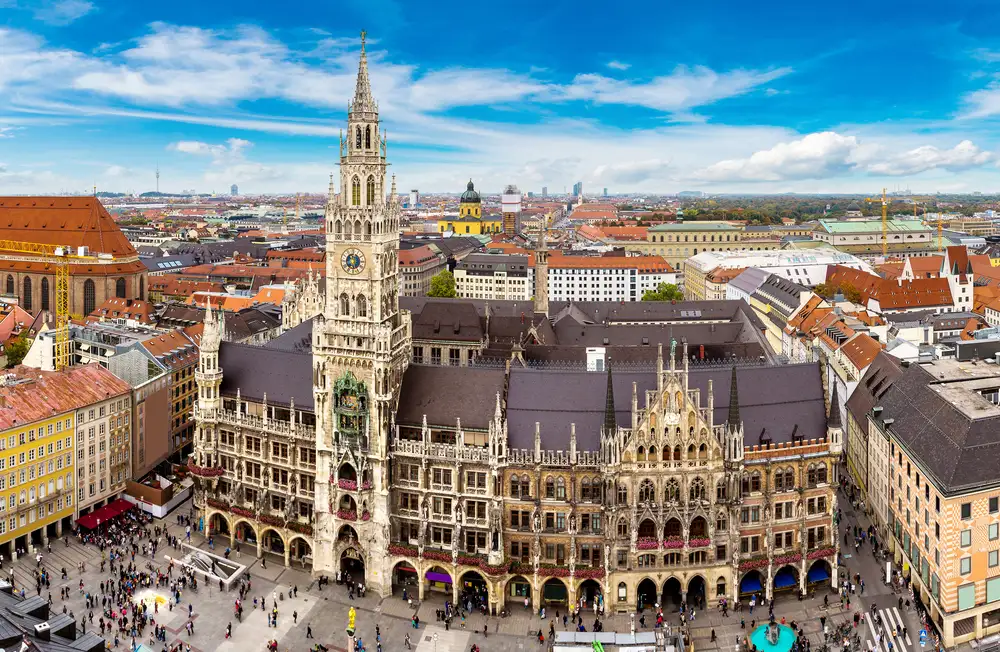
Munich
Arriving in Munich, you would be forgiven for thinking you were on the set of a movie about old Bavaria. At the Old Town beer halls, barmaids laced in dirndl dresses serve up frosty Helles lager, as oom-pah music drifts across the Marienplatz square. Men in lederhosen and checked shirts merrily give toasts as they knock glasses, or steins, as they’re known here. They sit at tables laden with wurst sausage and giant pretzels oozing with herby butter. This is Germany’s Germany, a place where folk traditions never stopped, and the revelry doesn’t either. Even when it isn’t Oktoberfest, the town’s notorious beer-drinking celebration, Munich is always happy to show you a good time. Simply cast your eyes around the lavish, gilded banquet hall at the Munich Residenz, the 13th-century Wittelsbach palace. You’ll see Munich has been impressing guests for centuries. Or, swing by the BMW Museum and check out the classic German cars. They even let you sit inside to test out the new models. At the city’s English Gardens, surfers ride waves on one of the park’s rivers. Munich is filled to the brim with this kind of pure-hearted German fun.

Learn About Munich
Build Munich Trip
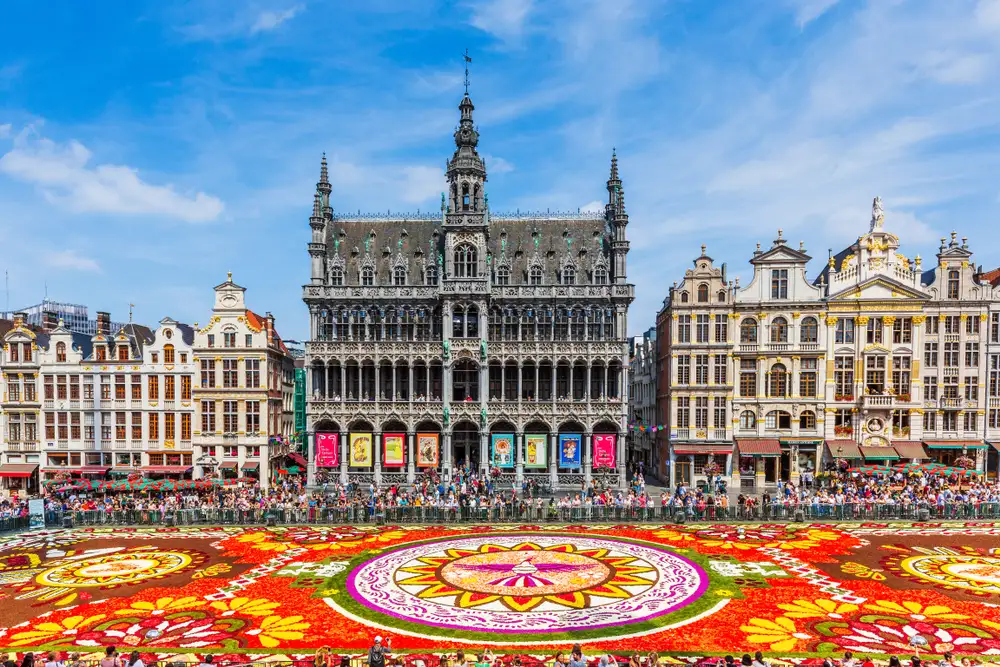
Brussels
It feels as though everything in Brussels is tinted with gold. From the gilded rooftops of the old houses on the Grand Palace to the foil-wrapped bonbons piled in chocolatier windows, Brussels seems to sparkle and wink at you around every corner. Aside from the lustrous architecture and Trappist ales, this shiny city is probably still best known for its iconic street food options: salty, golden fries, and fluffy, honey-colored waffles. While a major political center, home of the EU and NATO, don’t be fooled by Brussels stern ‘Eurocratic’ facade. Brussels revels in cheeky humor and mischief. So much so, Brussel’s beloved mascot, the ‘Manneken Pis’, is a statue of a small child urinating into a fountain. The city takes great pleasure in dressing this statue in festive-themed costumes. It’s no surprise that the artist Magritte, one of the great visual tricksters of the 20th century, called Brussels home. After a few days exploring the city, and taking in its sights and scenes, you’re sure to come away smiling.

Learn About Brussels
Build Brussels Trip

Bayeux
Bayeux is an old, well-preserved town in Normandy. Most known as the backdrop for the Battle of Normandy, visitors who descend from WWII veterans often feel a special, somber connection to this part of France. On June 6, 1944, otherwise known as ‘D-Day’, thousands of Allied troops landed on Normandy’s Atlantic Coast, with a mission to drive out the German occupying forces. More than 120,000 Allied soldiers died in combat over the next three months. Although victorious, the campaign for Normandy caused the highest number of losses for America in all of WWII. A landscape of remembrance, on a tour of the Norman countryside you’ll see the remains of tanks, aircraft, and military bunkers. Special cemeteries and memorials in the area pay tribute to the sacrifice of fallen soldiers. Despite the destruction of nearly every neighboring village, the town of Bayeux endured WWII unscathed. Along with all its medieval architecture, the town’s most precious treasure, the Bayeux Tapestry, was miraculously spared. Stitched in the 11th century, the Tapestry tells the story of William the Conqueror’s invasion of England in 1066. As you view the tapestry and stroll through the charming streets of Bayeux, the sweeping cathedral spires and gently flowing River Aure cast you back to another time. A landscape of war, but also remembrance, a trip to Bayeux and Normandy will deepen your appreciation and respect for the past.

Learn About Bayeux
Build Bayeux Trip
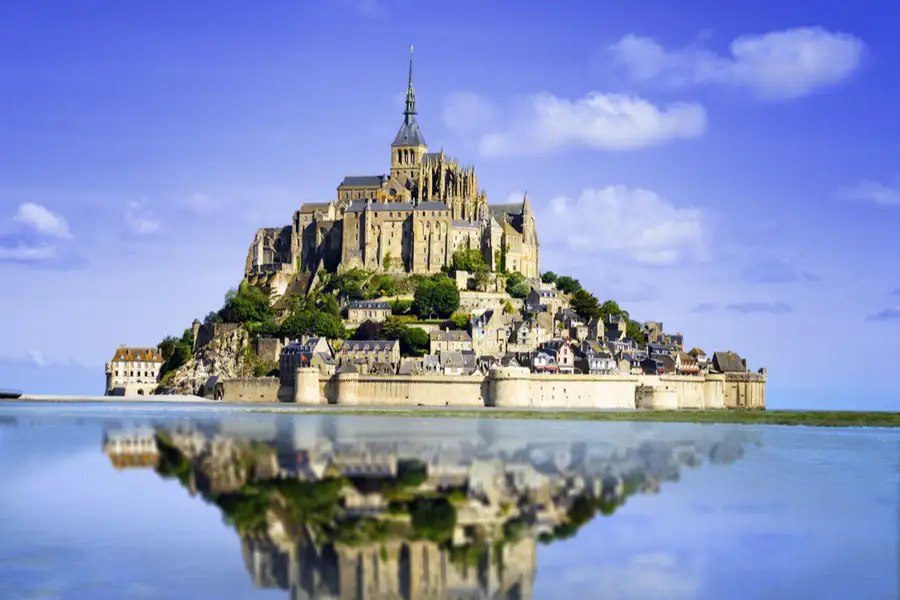
Rennes
Rennes is the capital of Brittany, the most northwest region in France. A sea and countryside getaway, Brittany is famous for its medieval towns, ancient rocky landscapes, and seaside villages. Dotted along the blue-green Atlantic coastline, towns like St. Malo, Dinard, and Cancale are long-time summer vacation spots for the French. Needless to say, you have to try the fresh seafood. Offshore, the island of Mont-Saint-Michel rests dreamily amongst the waves. One of the most beloved UNESCO heritage sites in France, this medieval abbey is connected to the mainland by a bridge over a causeway. Heading inland, there are centuries-old churches, stone cottages, and castles that belonged to Brittany’s medieval royalty, who were known for constantly feuding over successions. The river town of Dinan is surrounded by a fortress wall, a must-see for both its history and profound beauty. In Rennes, half-timbered houses and cobbled streets give way to some of the oldest marketplaces in France. Rennes itself is a tranquil, medium-sized city, easily explored in half a day. In the evening, the city’s gastronomic scene invites you to try local specialties - pancakes, such as savory stuffed galettes and thin, lemony crêpes, are the order of the day here.

Learn About Rennes
Build Rennes Trip
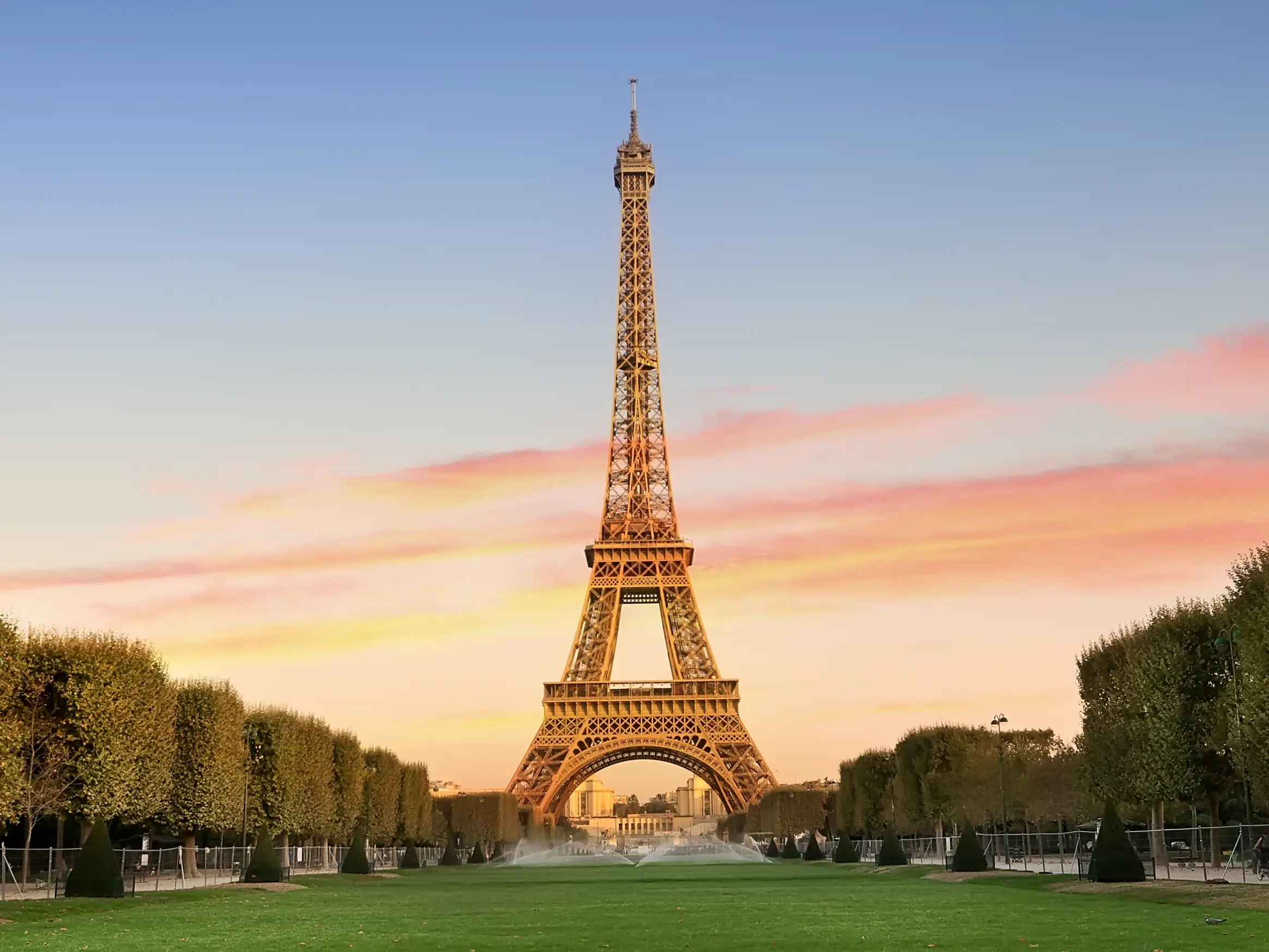
Paris
The magic of Paris is undeniable. This is the most romantic destination in Europe, and surely the number one bucket list destination of all time. If you want to say you've traveled, you have to visit Paris at least once. Along with classic must-sees like the Eiffel Tower and the Sacre-Coeur, there is so much to see and do in Paris that it helps to narrow it down by interest. Fashion and shopping enthusiast? Look no further than the Galeries Lafayette, Avenue des Champs-Élysées, or the Marais. Art aficionado? Once you're done with the Louvre, make a start on the Musée d'Orsay. History buffs won't be able to walk a block without uncovering a monument to Napoleon or Louis XIV. If you visit Paris with a foodie, be warned — you'll gaze in a lot of patisserie windows, and sample your weight in croissants. Because Paris always has so much on offer, it never grows old. At dusk, as you stroll the wide boulevards past Haussmann apartment buildings and sharply dressed Parisians, or gaze down at the city from the hill at Montmarte, you might find yourself saying 'Paris Je t' aime'. This is, after all, the City of Love.

Learn About Paris
Build Paris Trip

Heidelberg
Heidelberg is buried deep in the forests of southwest Germany. Flanking both sides of the Neckar River, Heidelberg's red and white baroque old town looks like something from a book of folktales. On the hillside above the town, you'll see the looming, tumbledown remains of Heidelberg's Gothic-Renaissance castle, Heidelberger Schloss. The subject of strange local legends, Heidelberg Castle was once home to knights, a famous court jester, and even a witch. It is said the first person who pulls out an iron ring embedded in one of the great doors will be the castle's true owner. Surely on your visit, it's worth a try? Across the river, follow in the footsteps of scholars on a hiking trail known as The Philosophers’ Way. Heidelberg University is the oldest in Germany, and its leafy, temple-like campus contributes to the gentle, contemplative atmosphere of the town. A poetic city with the dreamy feel of a watercolor painting, it's no wonder Heidelberg inspired writers like Mark Twain and Johann Wolfgang von Goethe. The city has even been recognized by UNESCO as a City of Literature. Especially on misty, grey days, Heidelberg has a way of sweeping you up in its romanticism.

Learn About Heidelberg
Build Heidelberg Trip

Munich
Arriving in Munich, you would be forgiven for thinking you were on the set of a movie about old Bavaria. At the Old Town beer halls, barmaids laced in dirndl dresses serve up frosty Helles lager, as oom-pah music drifts across the Marienplatz square. Men in lederhosen and checked shirts merrily give toasts as they knock glasses, or steins, as they’re known here. They sit at tables laden with wurst sausage and giant pretzels oozing with herby butter. This is Germany’s Germany, a place where folk traditions never stopped, and the revelry doesn’t either. Even when it isn’t Oktoberfest, the town’s notorious beer-drinking celebration, Munich is always happy to show you a good time. Simply cast your eyes around the lavish, gilded banquet hall at the Munich Residenz, the 13th-century Wittelsbach palace. You’ll see Munich has been impressing guests for centuries. Or, swing by the BMW Museum and check out the classic German cars. They even let you sit inside to test out the new models. At the city’s English Gardens, surfers ride waves on one of the park’s rivers. Munich is filled to the brim with this kind of pure-hearted German fun.

Learn About Munich
Build Munich Trip

Brussels
It feels as though everything in Brussels is tinted with gold. From the gilded rooftops of the old houses on the Grand Palace to the foil-wrapped bonbons piled in chocolatier windows, Brussels seems to sparkle and wink at you around every corner. Aside from the lustrous architecture and Trappist ales, this shiny city is probably still best known for its iconic street food options: salty, golden fries, and fluffy, honey-colored waffles. While a major political center, home of the EU and NATO, don’t be fooled by Brussels stern ‘Eurocratic’ facade. Brussels revels in cheeky humor and mischief. So much so, Brussel’s beloved mascot, the ‘Manneken Pis’, is a statue of a small child urinating into a fountain. The city takes great pleasure in dressing this statue in festive-themed costumes. It’s no surprise that the artist Magritte, one of the great visual tricksters of the 20th century, called Brussels home. After a few days exploring the city, and taking in its sights and scenes, you’re sure to come away smiling.

Learn About Brussels
Build Brussels Trip

Bayeux
Bayeux is an old, well-preserved town in Normandy. Most known as the backdrop for the Battle of Normandy, visitors who descend from WWII veterans often feel a special, somber connection to this part of France. On June 6, 1944, otherwise known as ‘D-Day’, thousands of Allied troops landed on Normandy’s Atlantic Coast, with a mission to drive out the German occupying forces. More than 120,000 Allied soldiers died in combat over the next three months. Although victorious, the campaign for Normandy caused the highest number of losses for America in all of WWII. A landscape of remembrance, on a tour of the Norman countryside you’ll see the remains of tanks, aircraft, and military bunkers. Special cemeteries and memorials in the area pay tribute to the sacrifice of fallen soldiers. Despite the destruction of nearly every neighboring village, the town of Bayeux endured WWII unscathed. Along with all its medieval architecture, the town’s most precious treasure, the Bayeux Tapestry, was miraculously spared. Stitched in the 11th century, the Tapestry tells the story of William the Conqueror’s invasion of England in 1066. As you view the tapestry and stroll through the charming streets of Bayeux, the sweeping cathedral spires and gently flowing River Aure cast you back to another time. A landscape of war, but also remembrance, a trip to Bayeux and Normandy will deepen your appreciation and respect for the past.

Learn About Bayeux
Build Bayeux Trip

Rennes
Rennes is the capital of Brittany, the most northwest region in France. A sea and countryside getaway, Brittany is famous for its medieval towns, ancient rocky landscapes, and seaside villages. Dotted along the blue-green Atlantic coastline, towns like St. Malo, Dinard, and Cancale are long-time summer vacation spots for the French. Needless to say, you have to try the fresh seafood. Offshore, the island of Mont-Saint-Michel rests dreamily amongst the waves. One of the most beloved UNESCO heritage sites in France, this medieval abbey is connected to the mainland by a bridge over a causeway. Heading inland, there are centuries-old churches, stone cottages, and castles that belonged to Brittany’s medieval royalty, who were known for constantly feuding over successions. The river town of Dinan is surrounded by a fortress wall, a must-see for both its history and profound beauty. In Rennes, half-timbered houses and cobbled streets give way to some of the oldest marketplaces in France. Rennes itself is a tranquil, medium-sized city, easily explored in half a day. In the evening, the city’s gastronomic scene invites you to try local specialties - pancakes, such as savory stuffed galettes and thin, lemony crêpes, are the order of the day here.

Learn About Rennes
Build Rennes Trip

Paris
The magic of Paris is undeniable. This is the most romantic destination in Europe, and surely the number one bucket list destination of all time. If you want to say you've traveled, you have to visit Paris at least once. Along with classic must-sees like the Eiffel Tower and the Sacre-Coeur, there is so much to see and do in Paris that it helps to narrow it down by interest. Fashion and shopping enthusiast? Look no further than the Galeries Lafayette, Avenue des Champs-Élysées, or the Marais. Art aficionado? Once you're done with the Louvre, make a start on the Musée d'Orsay. History buffs won't be able to walk a block without uncovering a monument to Napoleon or Louis XIV. If you visit Paris with a foodie, be warned — you'll gaze in a lot of patisserie windows, and sample your weight in croissants. Because Paris always has so much on offer, it never grows old. At dusk, as you stroll the wide boulevards past Haussmann apartment buildings and sharply dressed Parisians, or gaze down at the city from the hill at Montmarte, you might find yourself saying 'Paris Je t' aime'. This is, after all, the City of Love.

Learn About Paris
Build Paris Trip
prev
next


 Map of Your Itinerary Route
Map of Your Itinerary Route
Zoom In to the cities to see your itinerary in more detail


 4.8
4.8 






